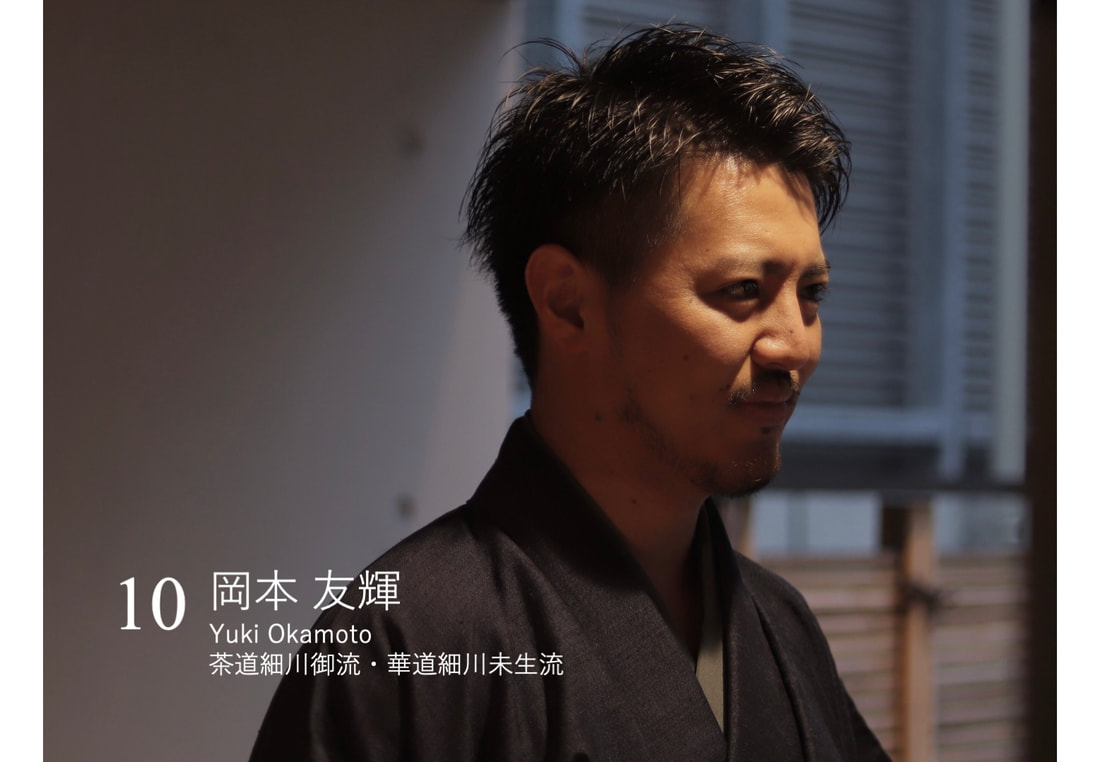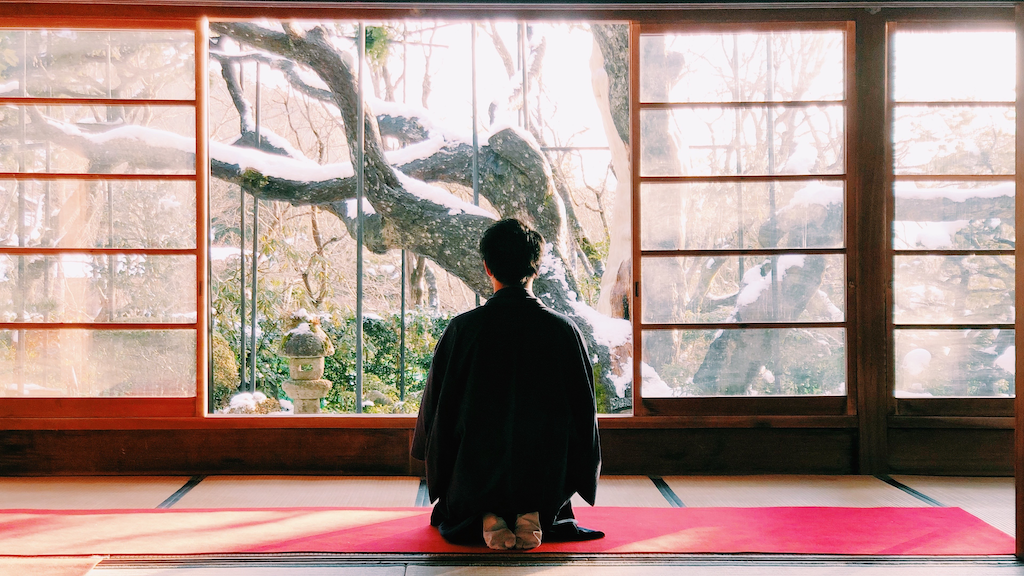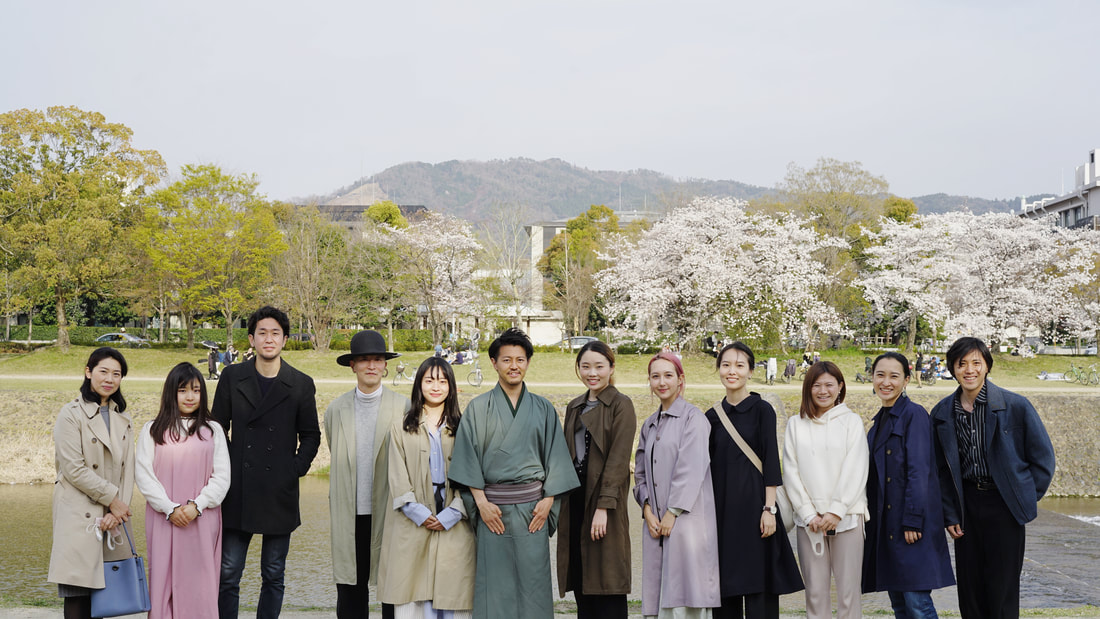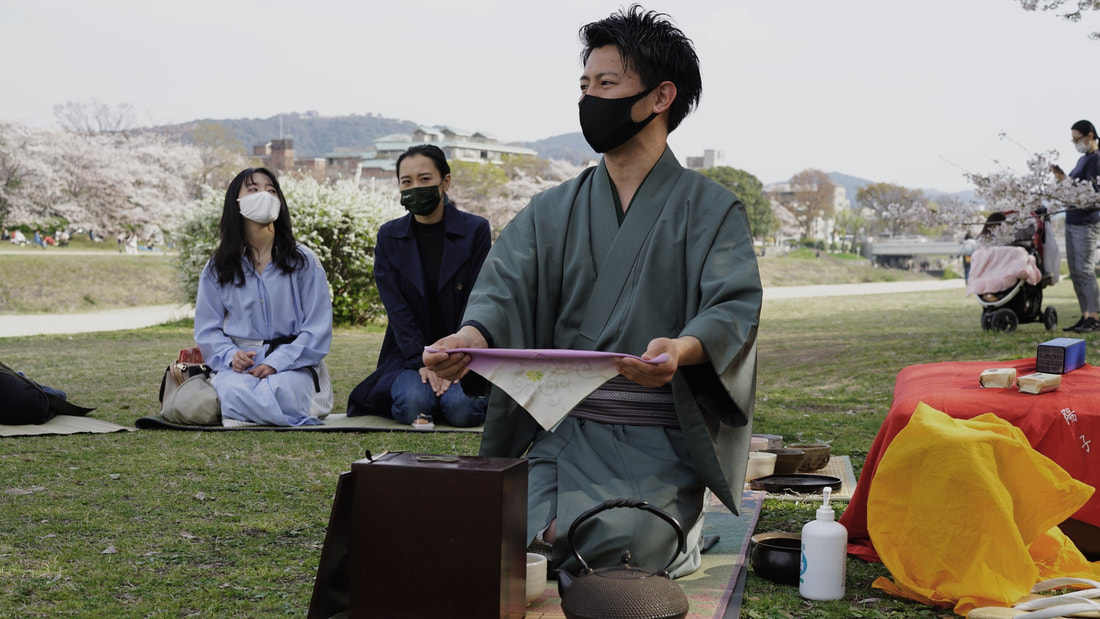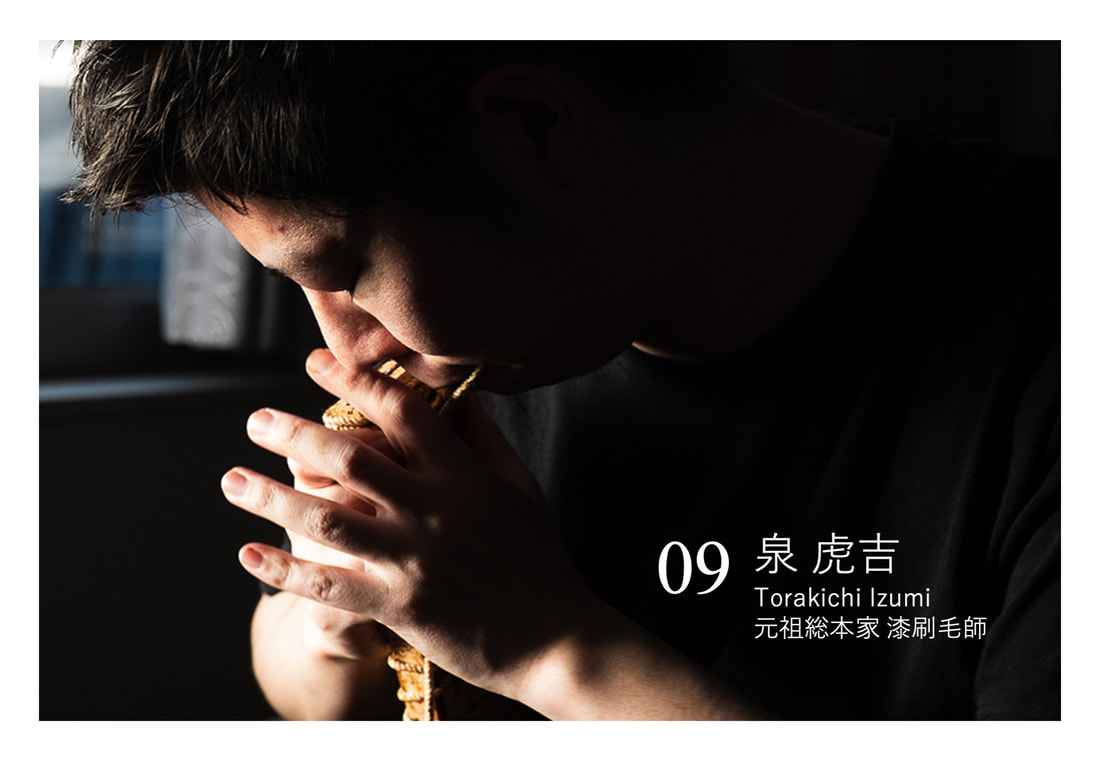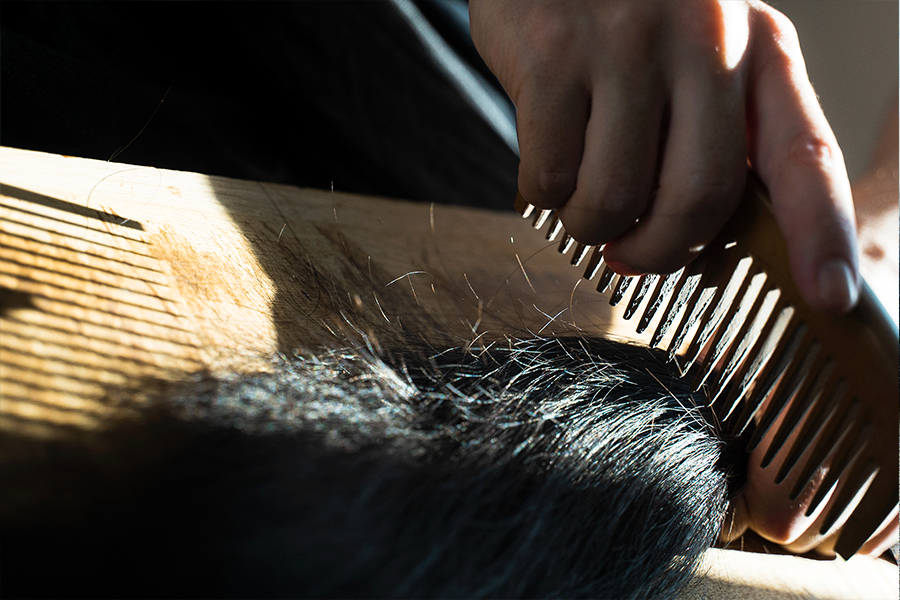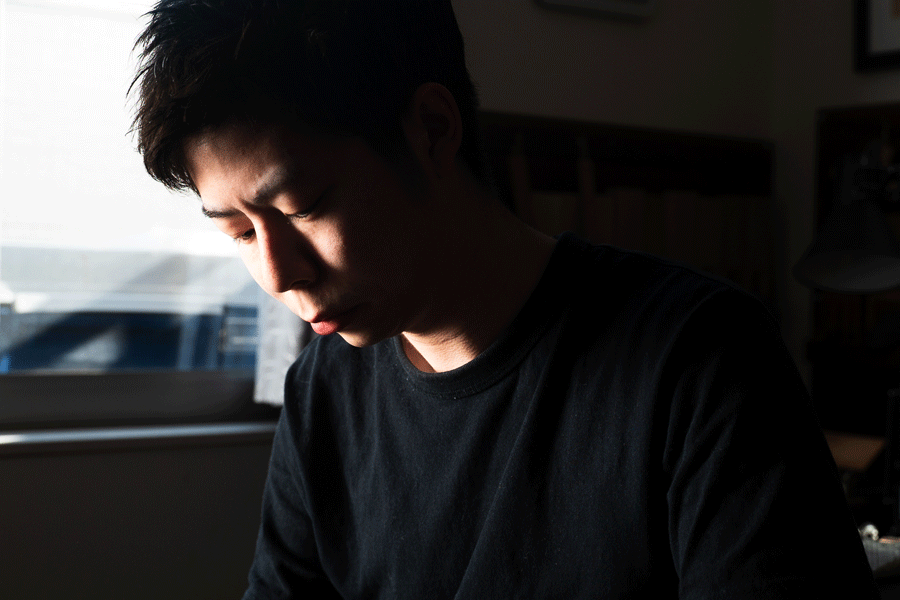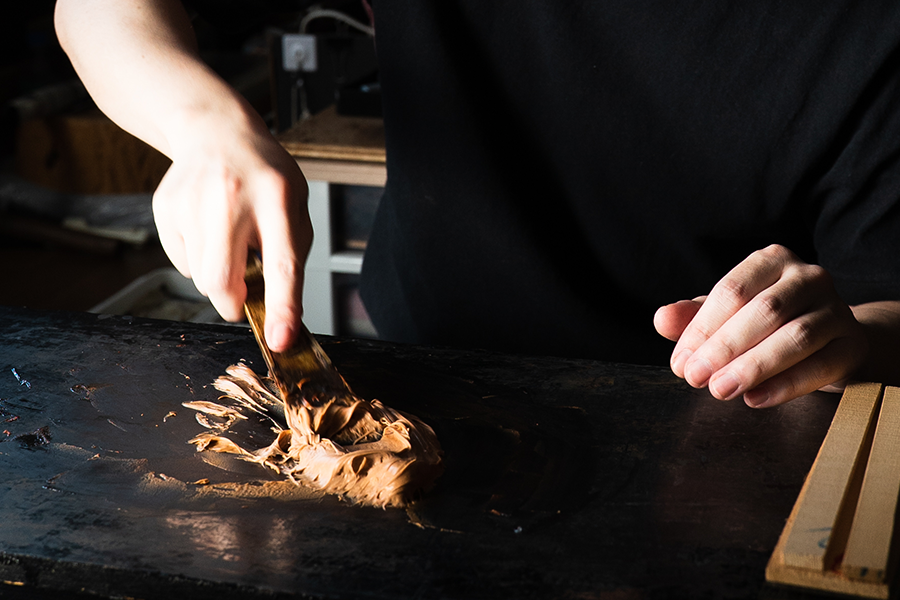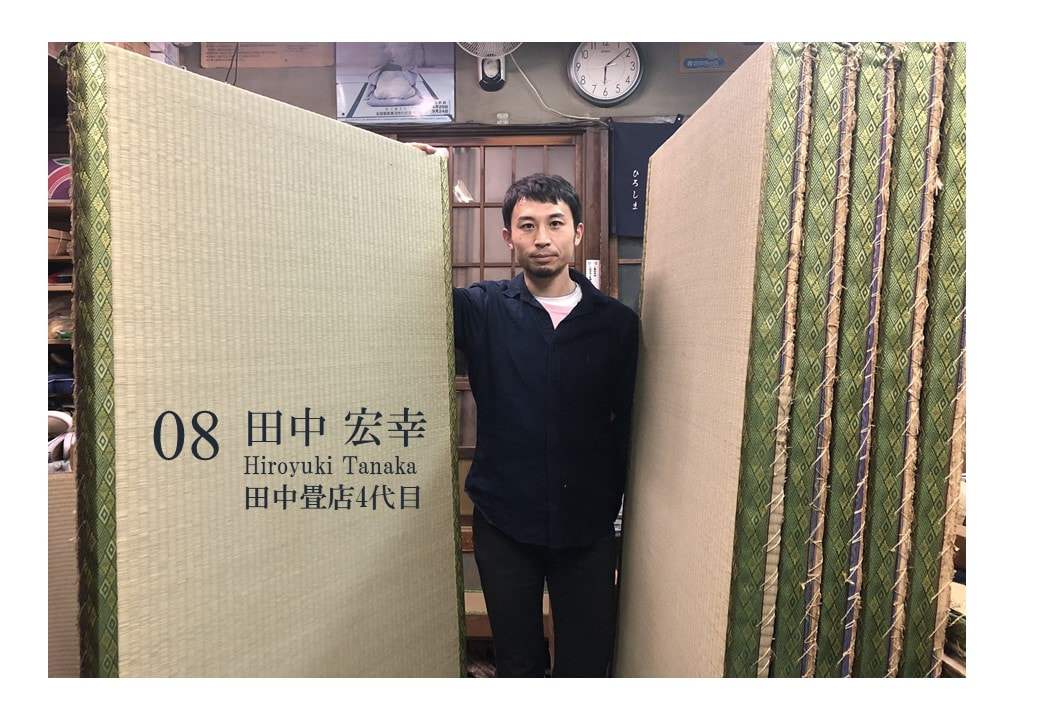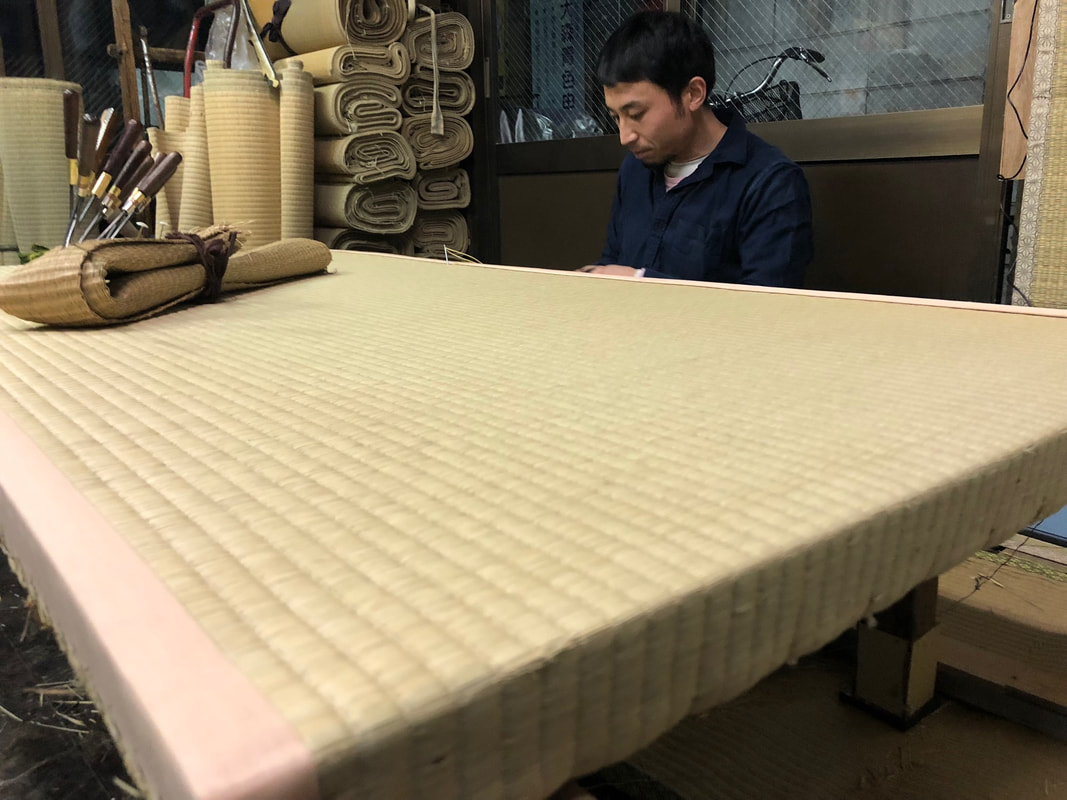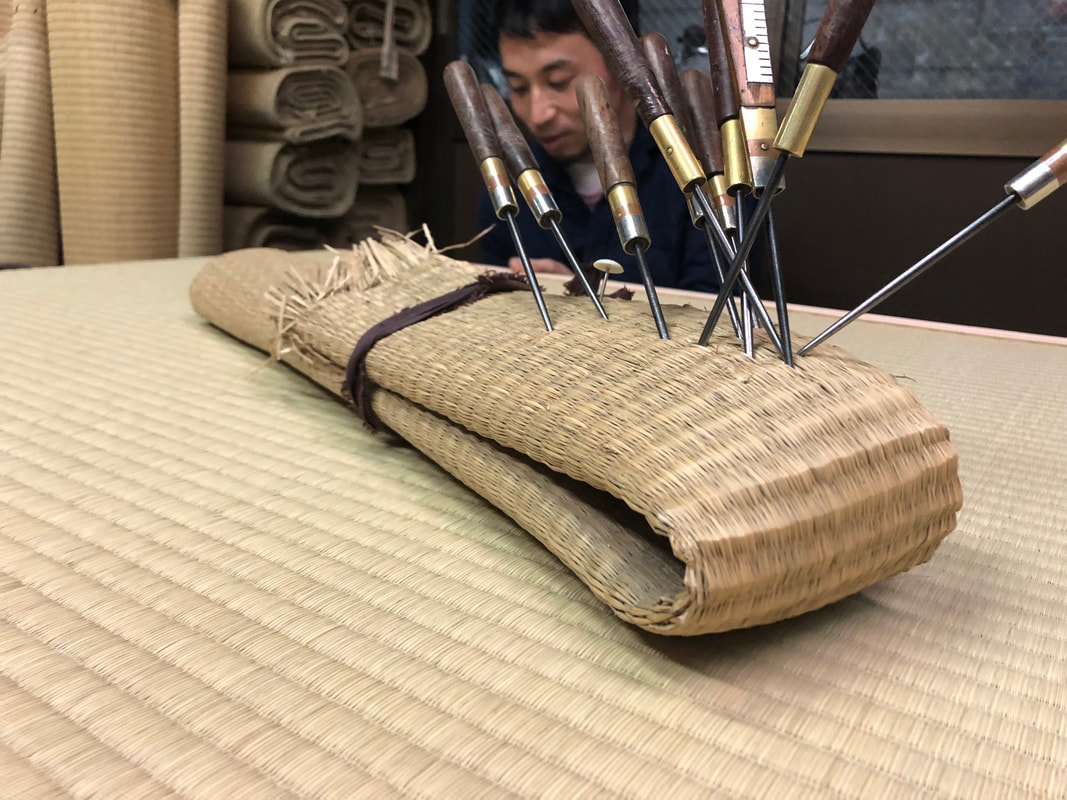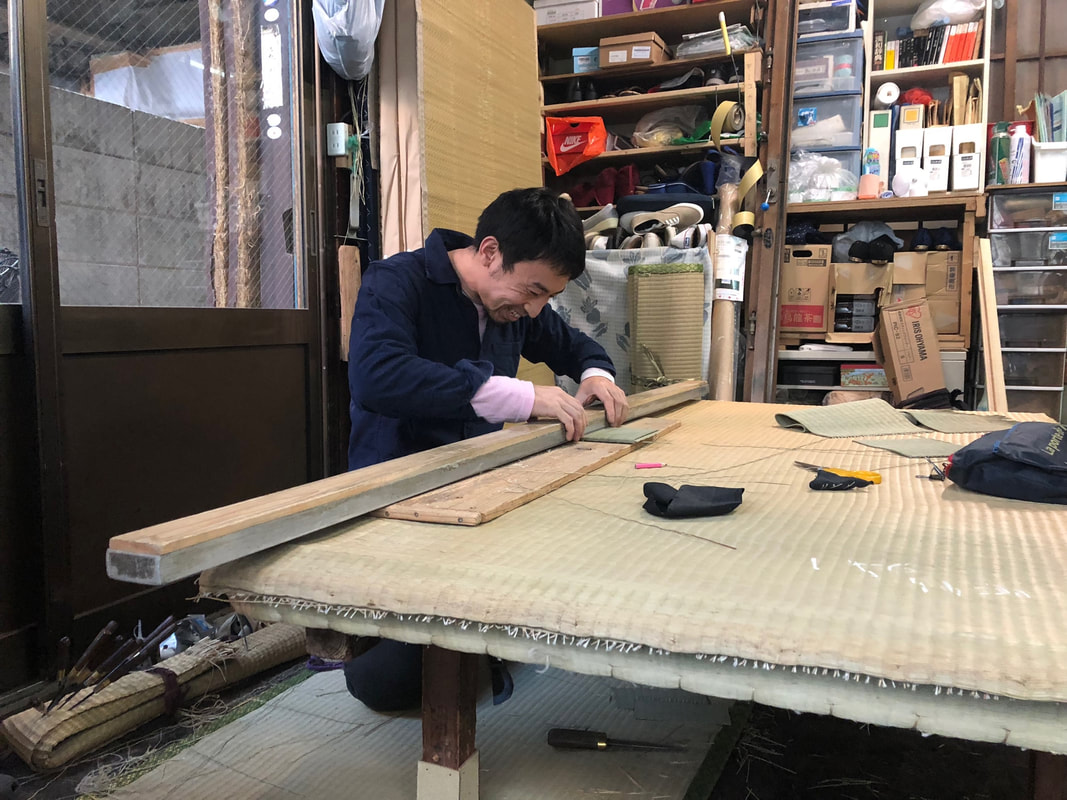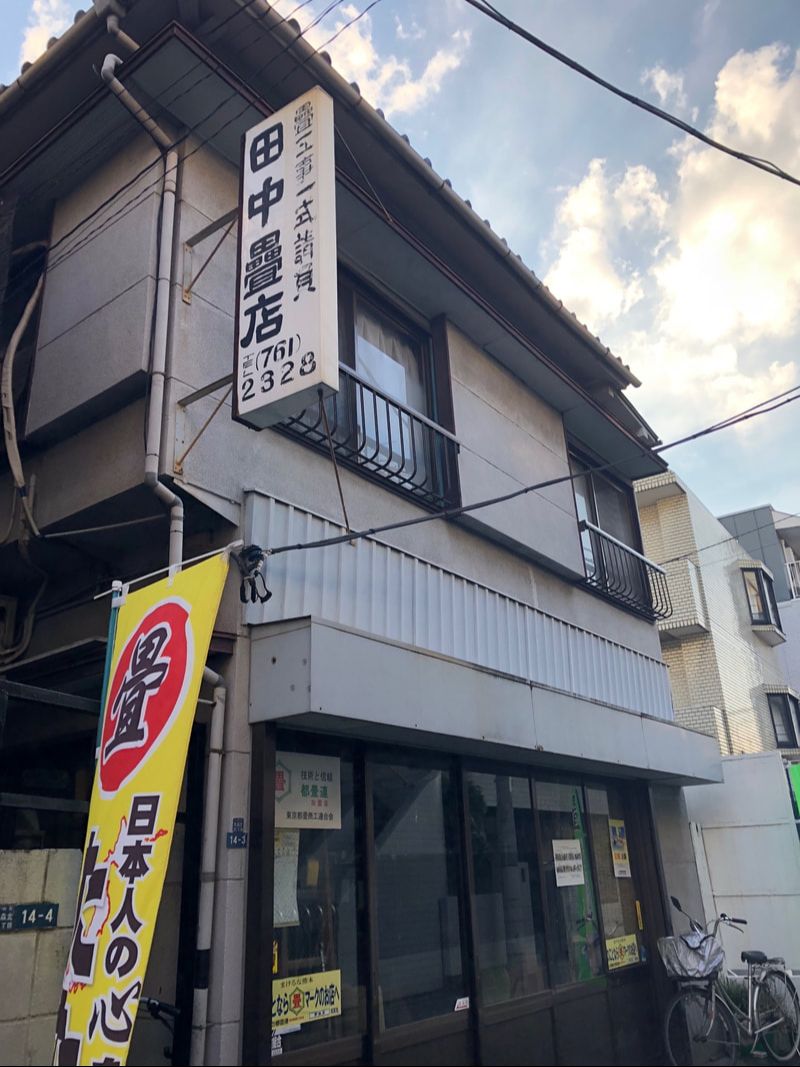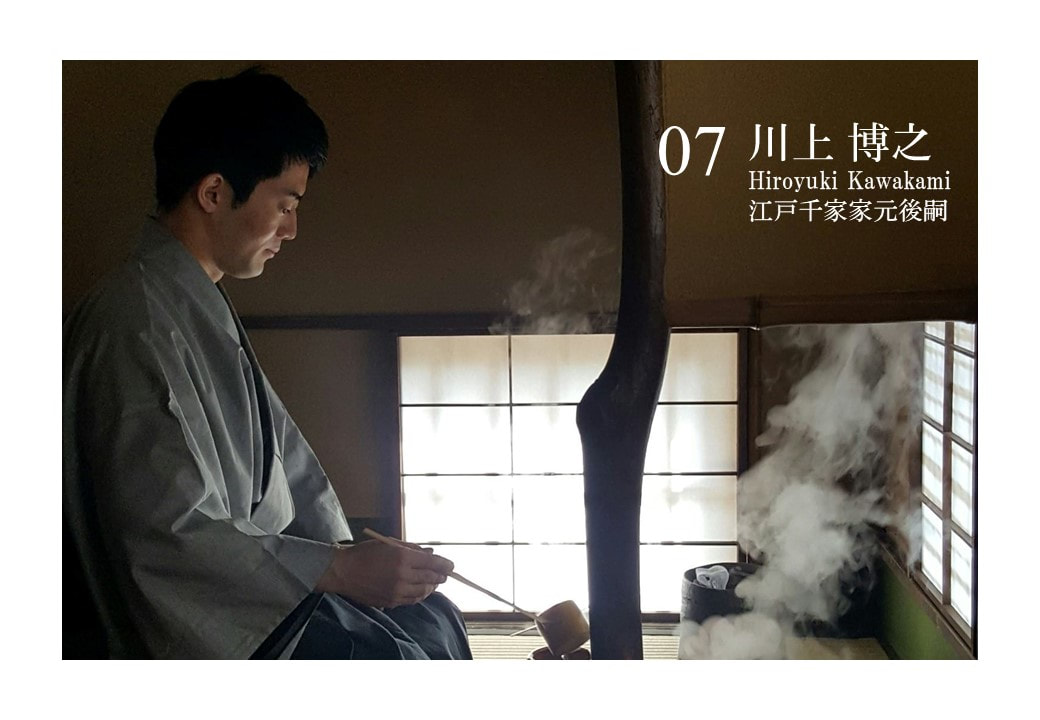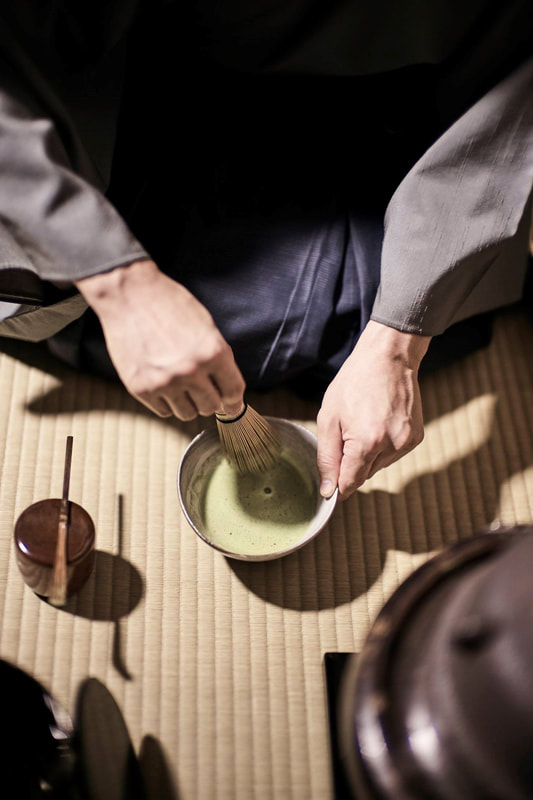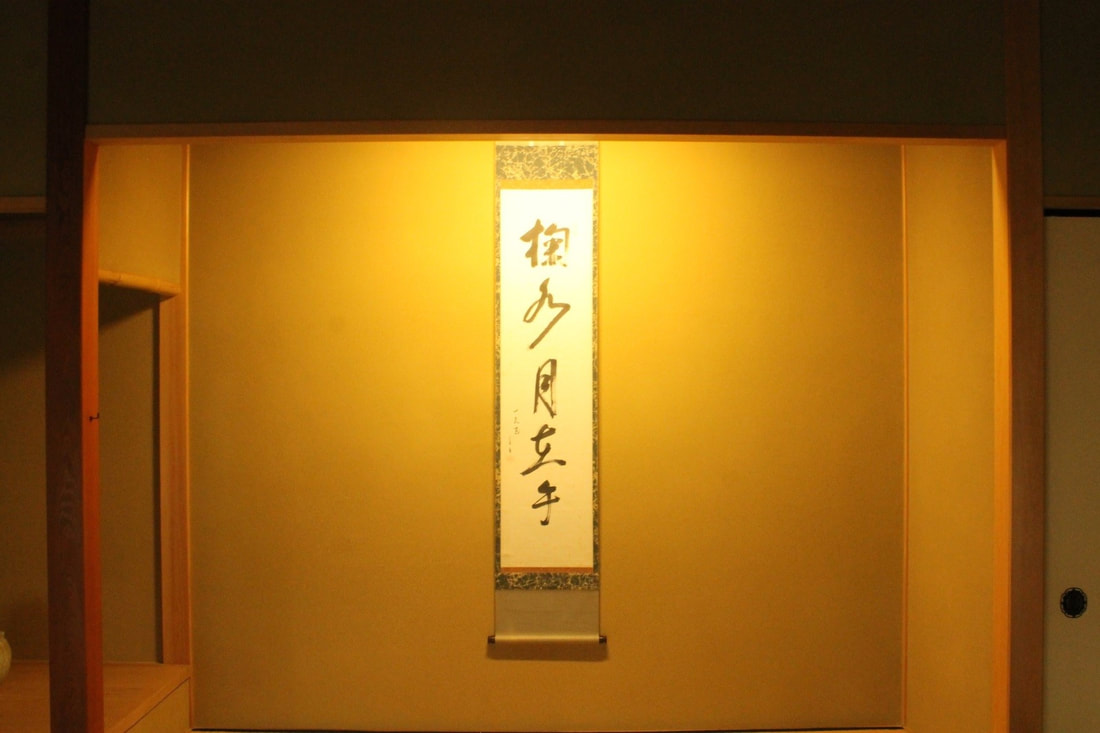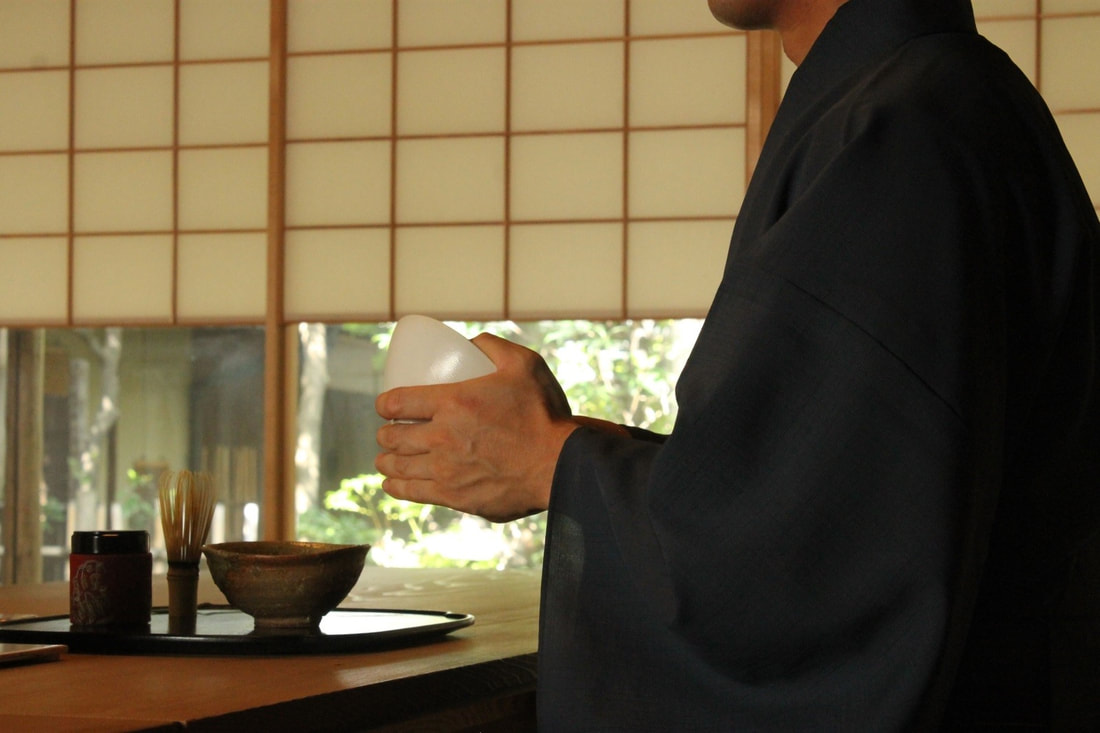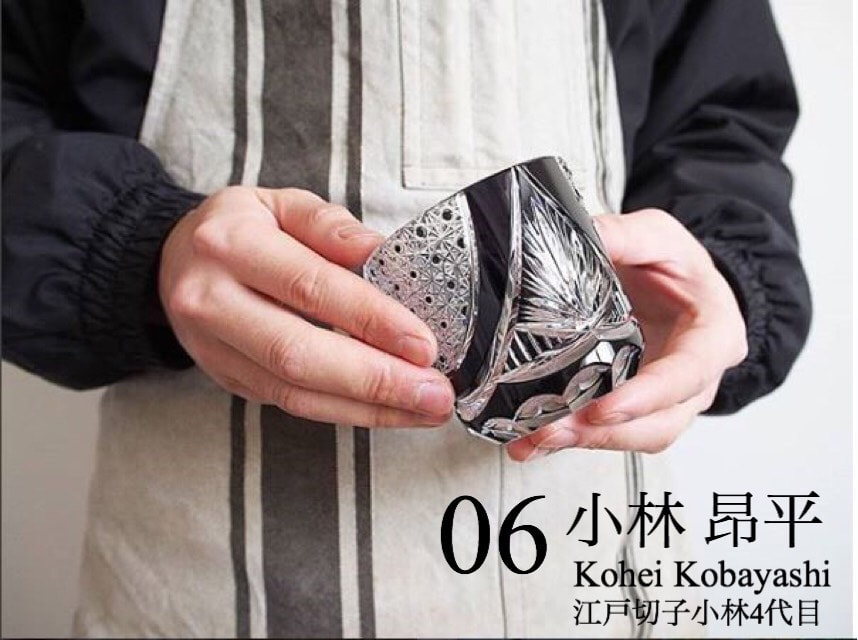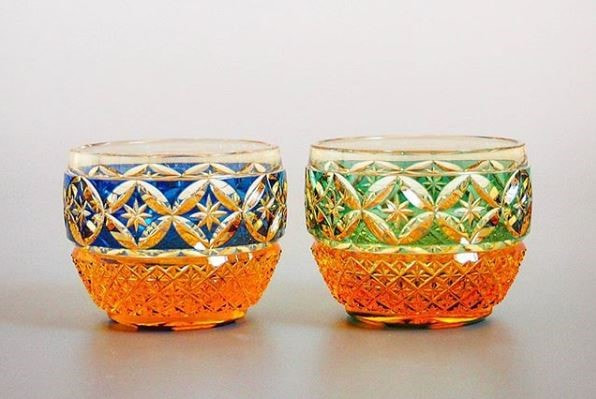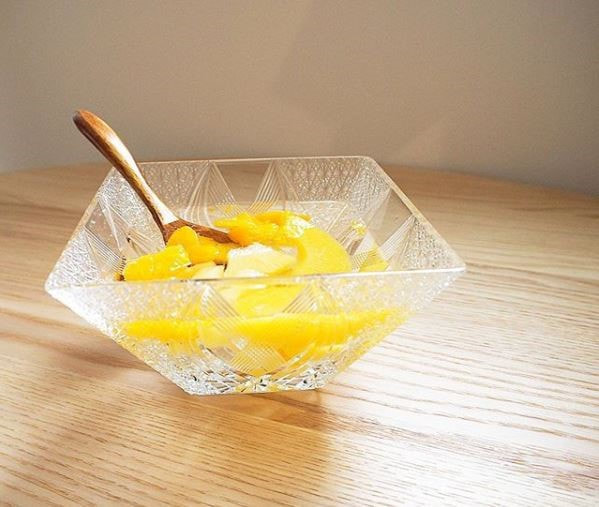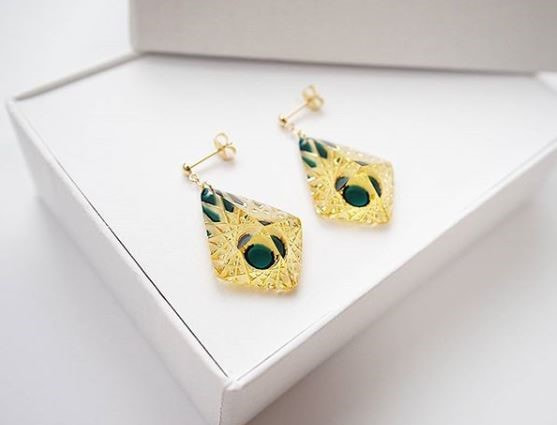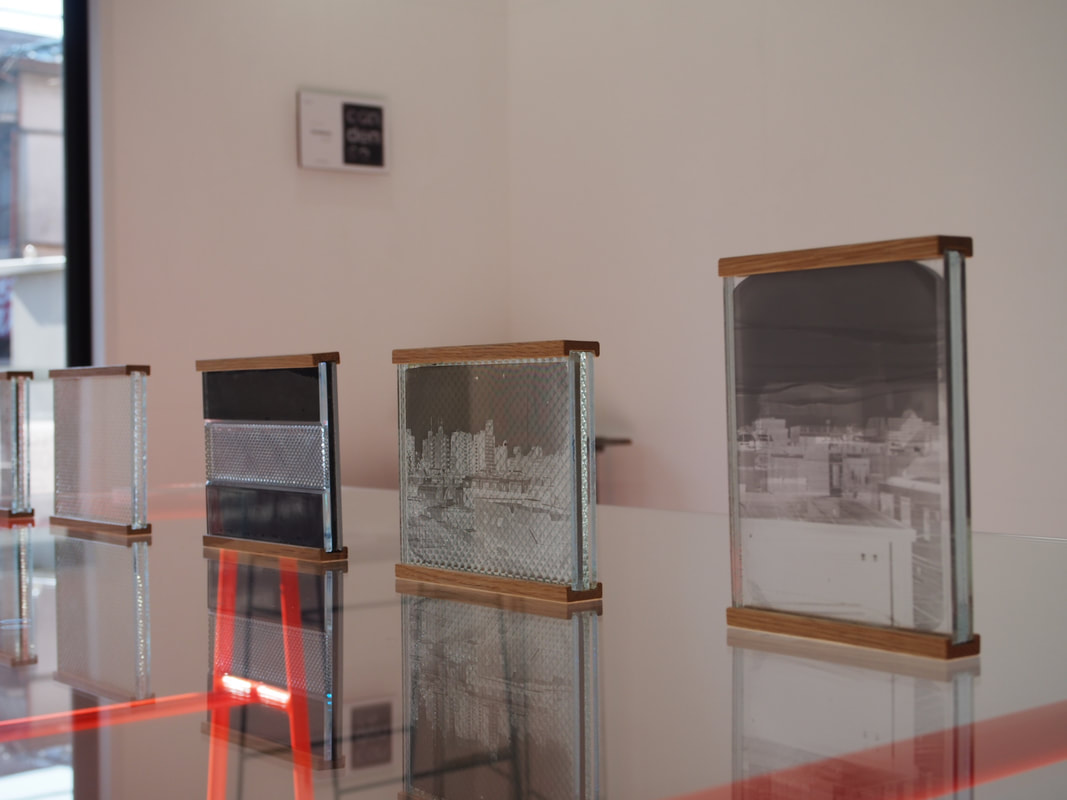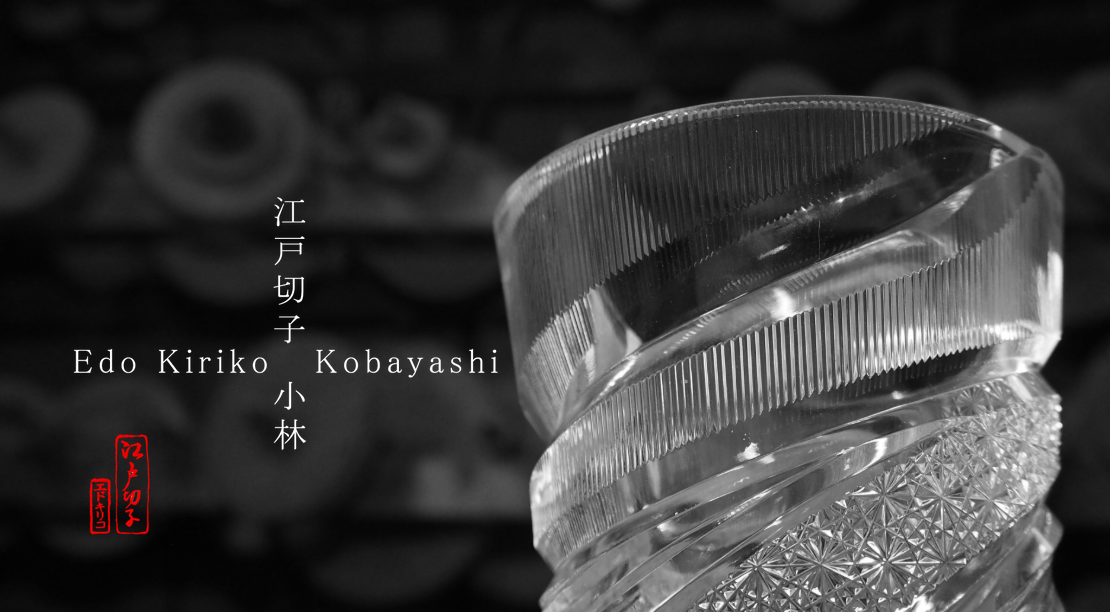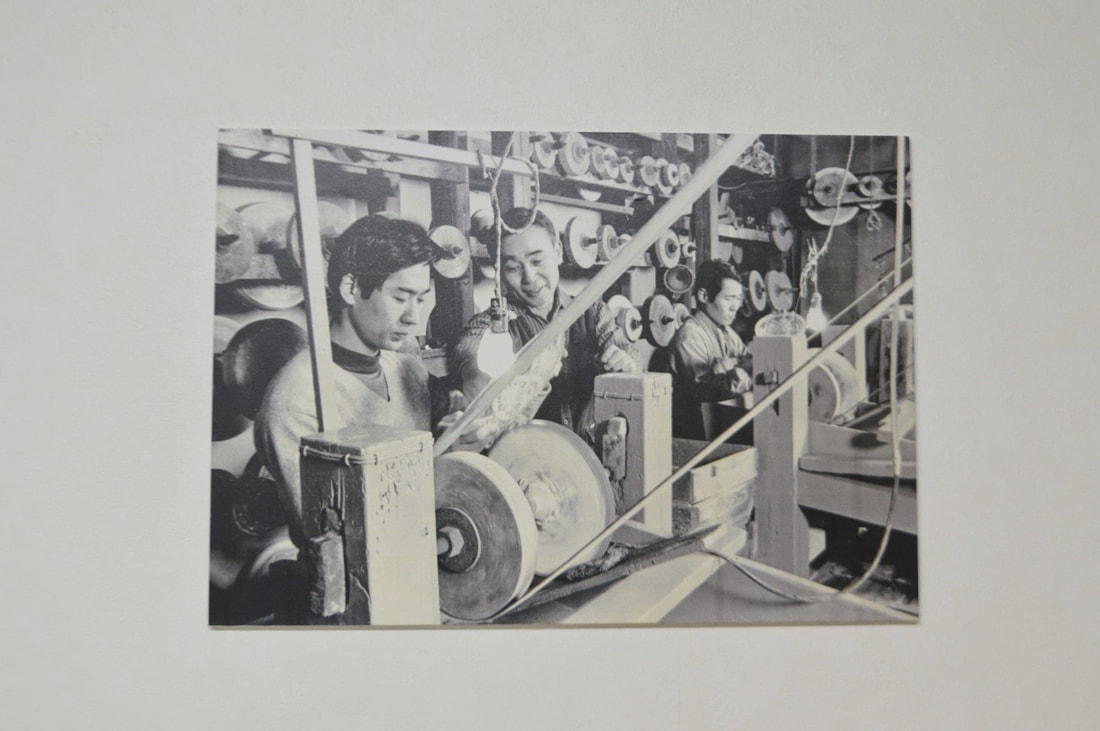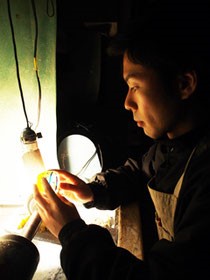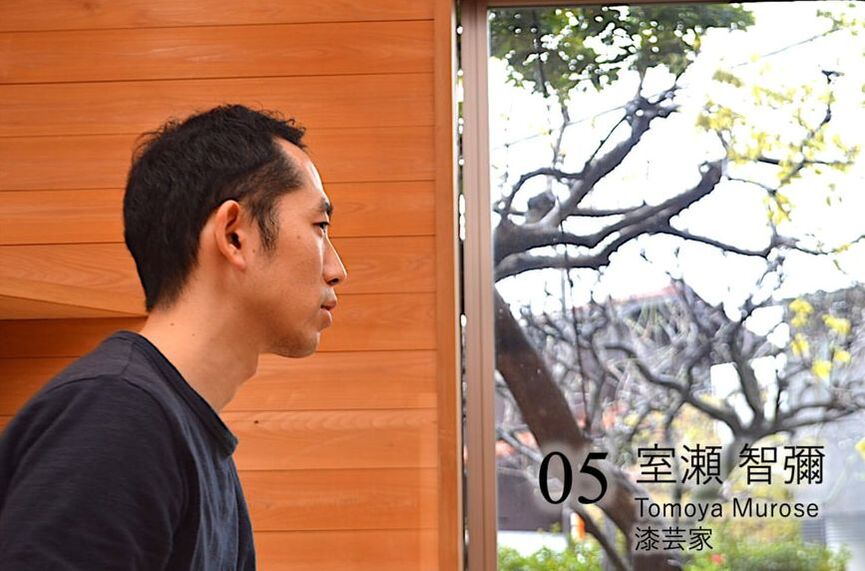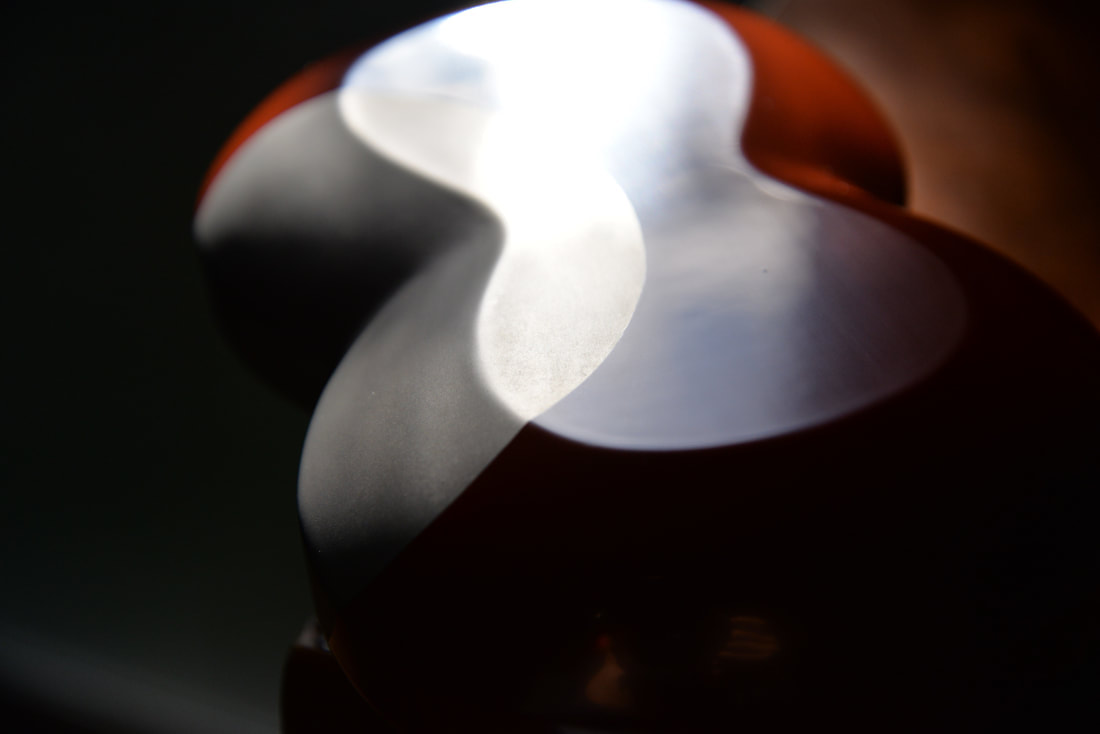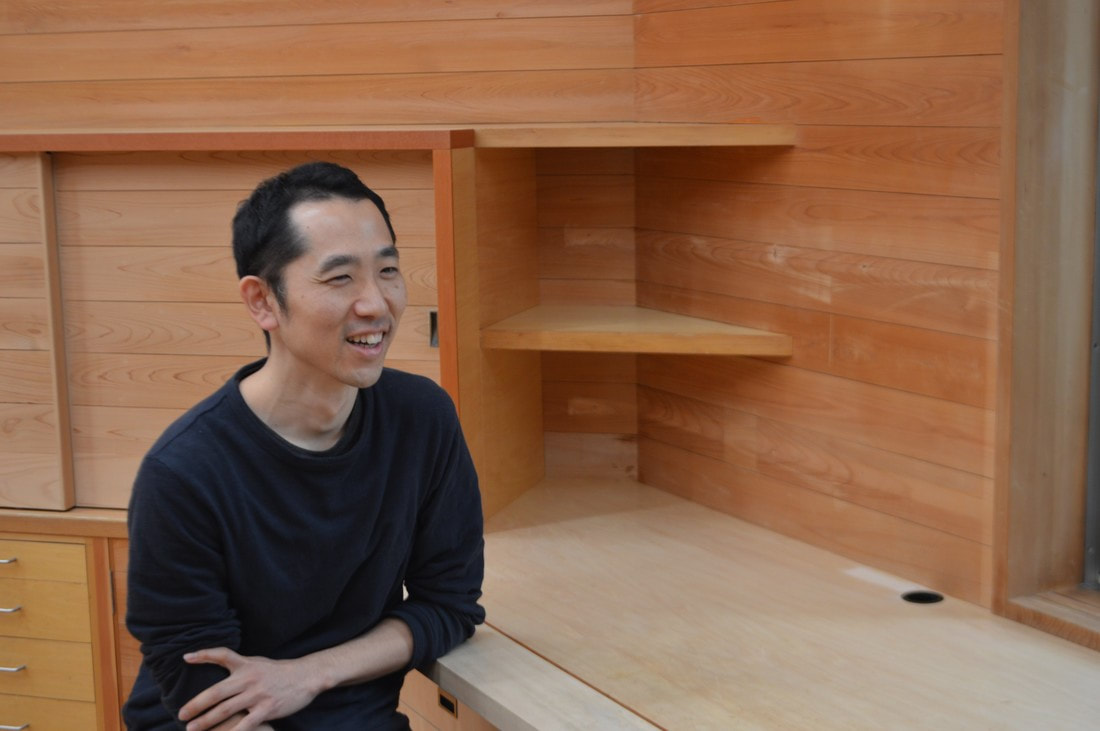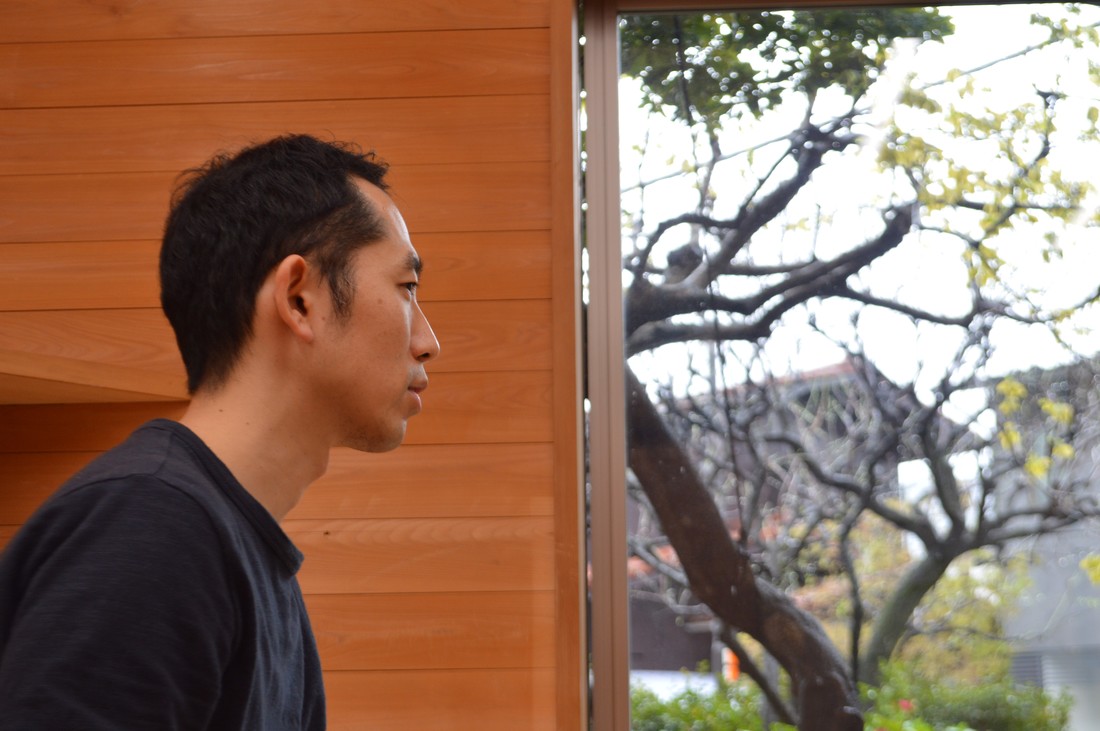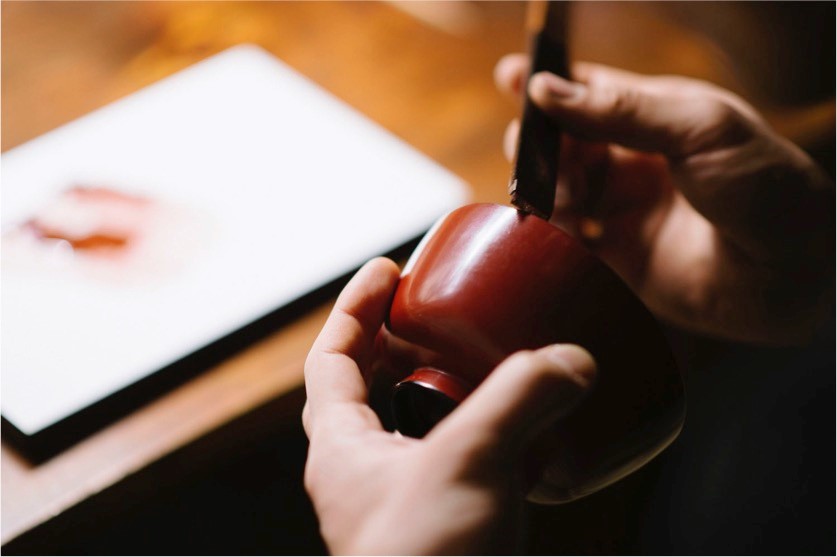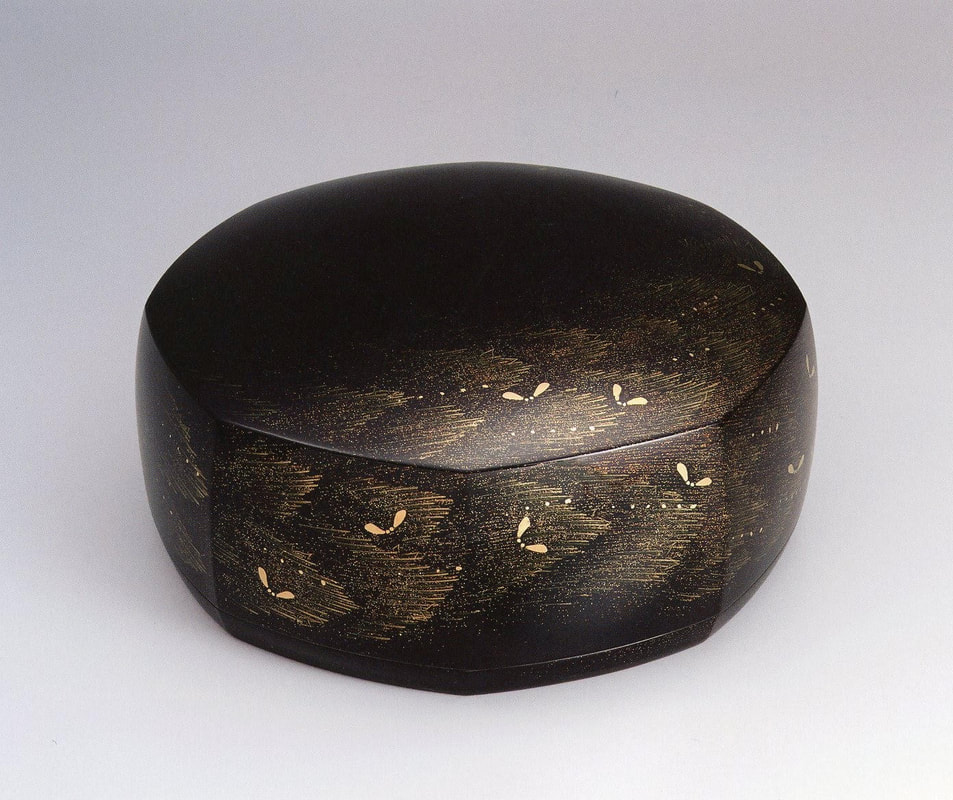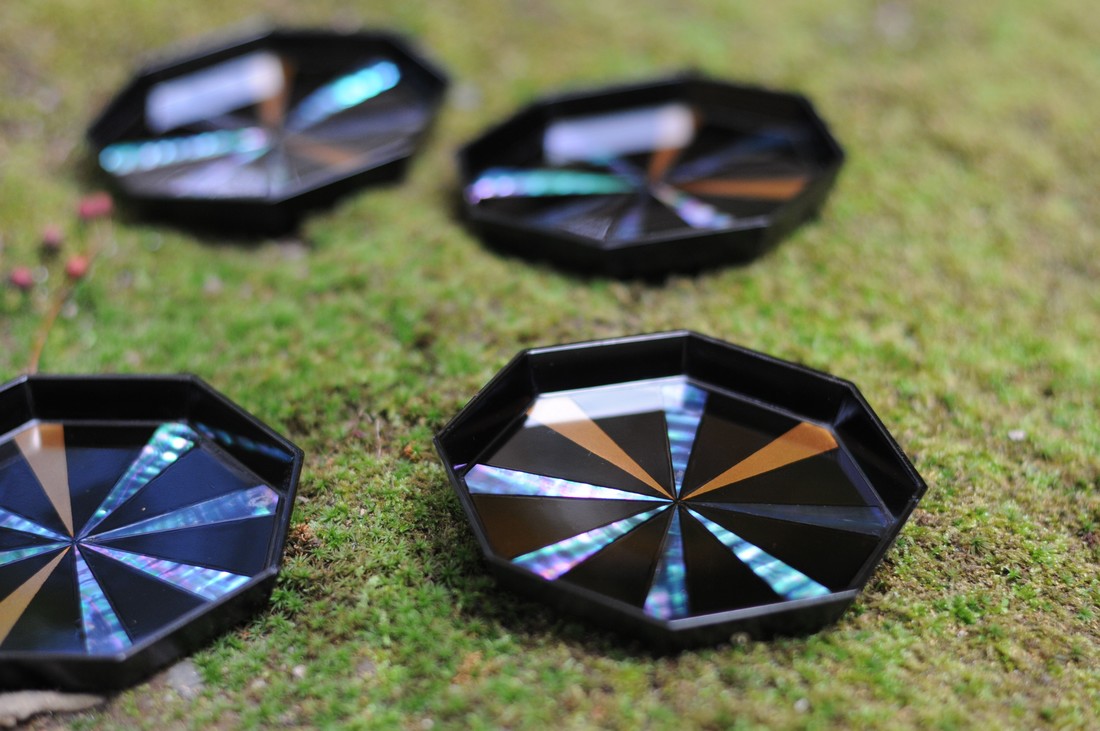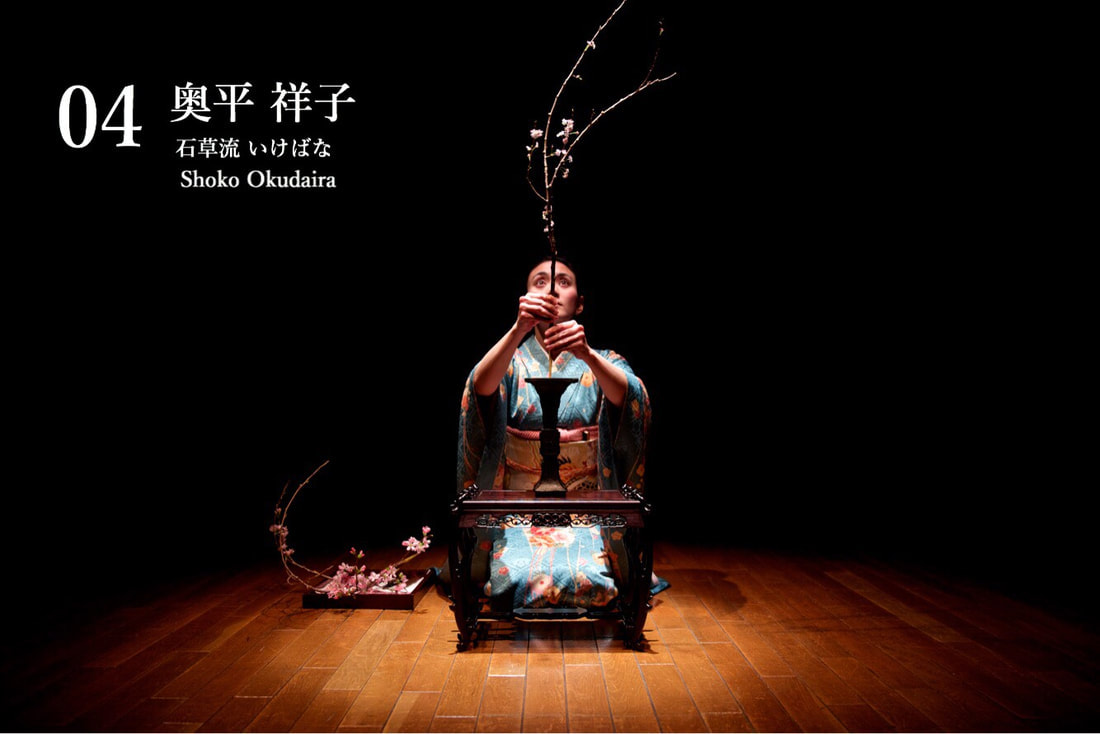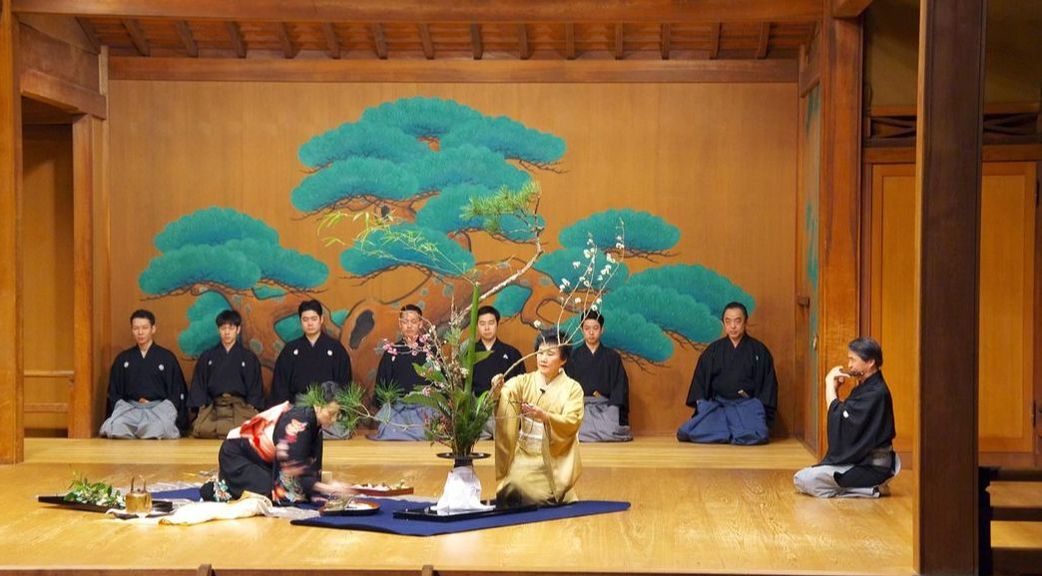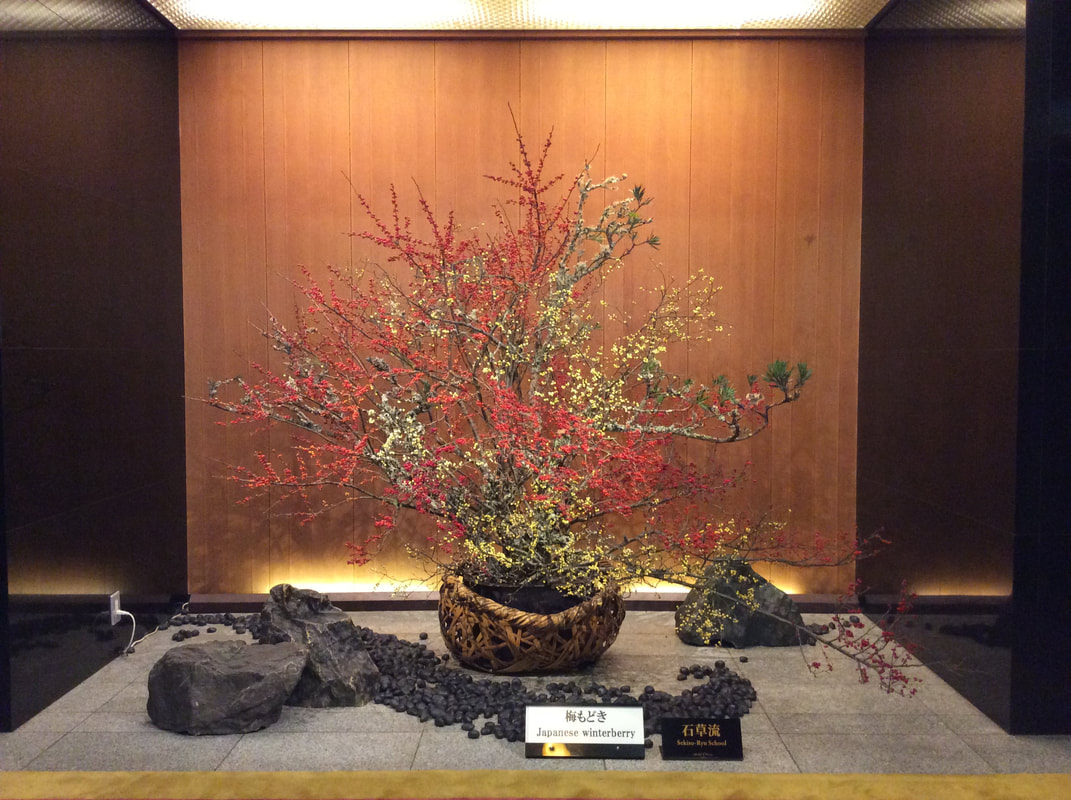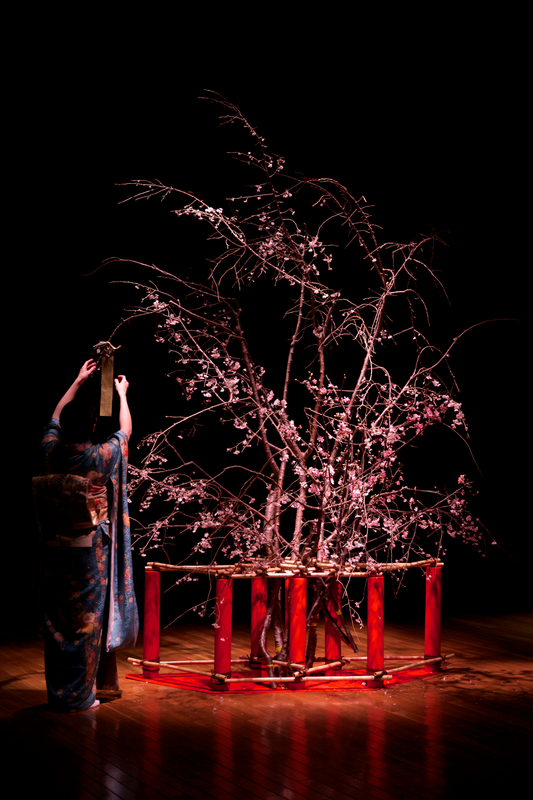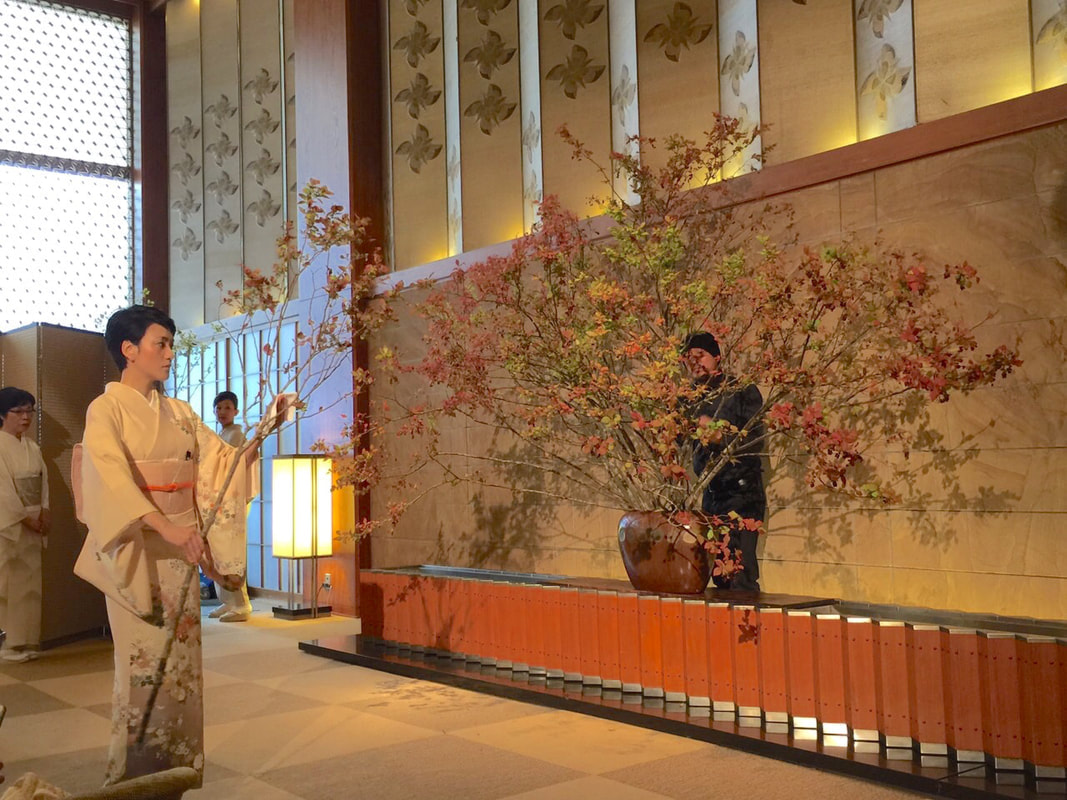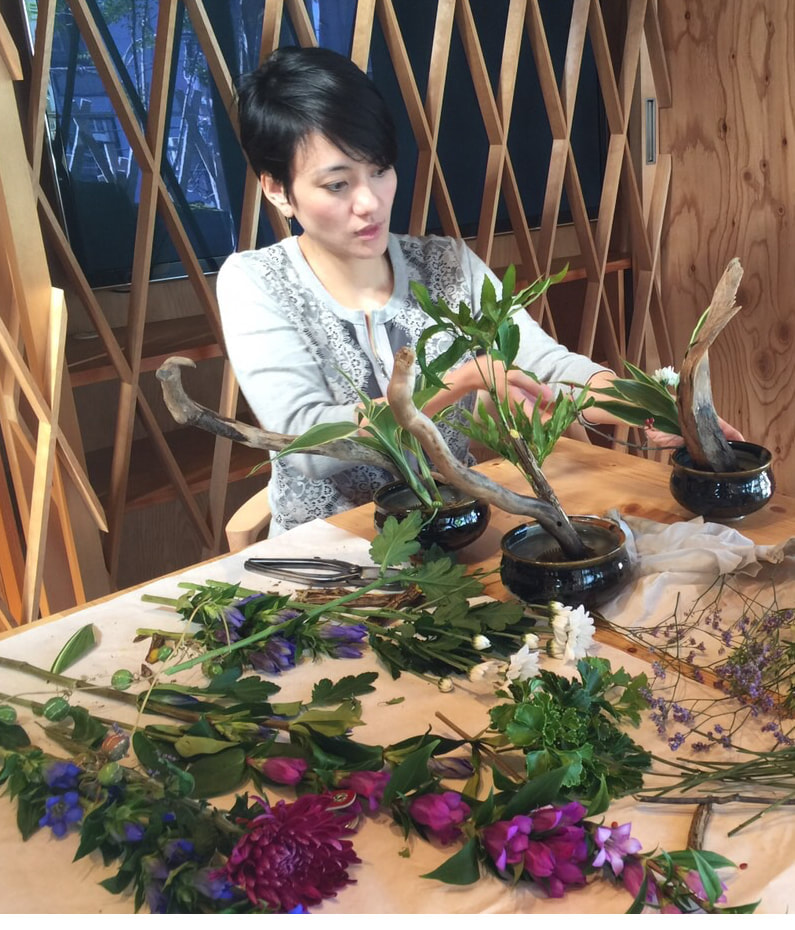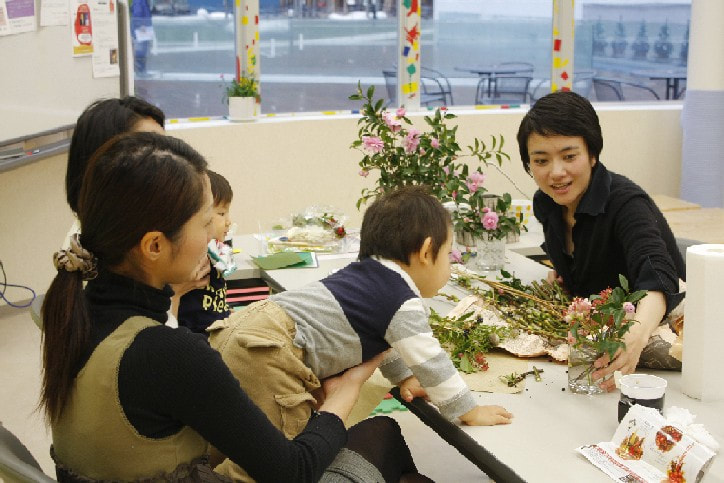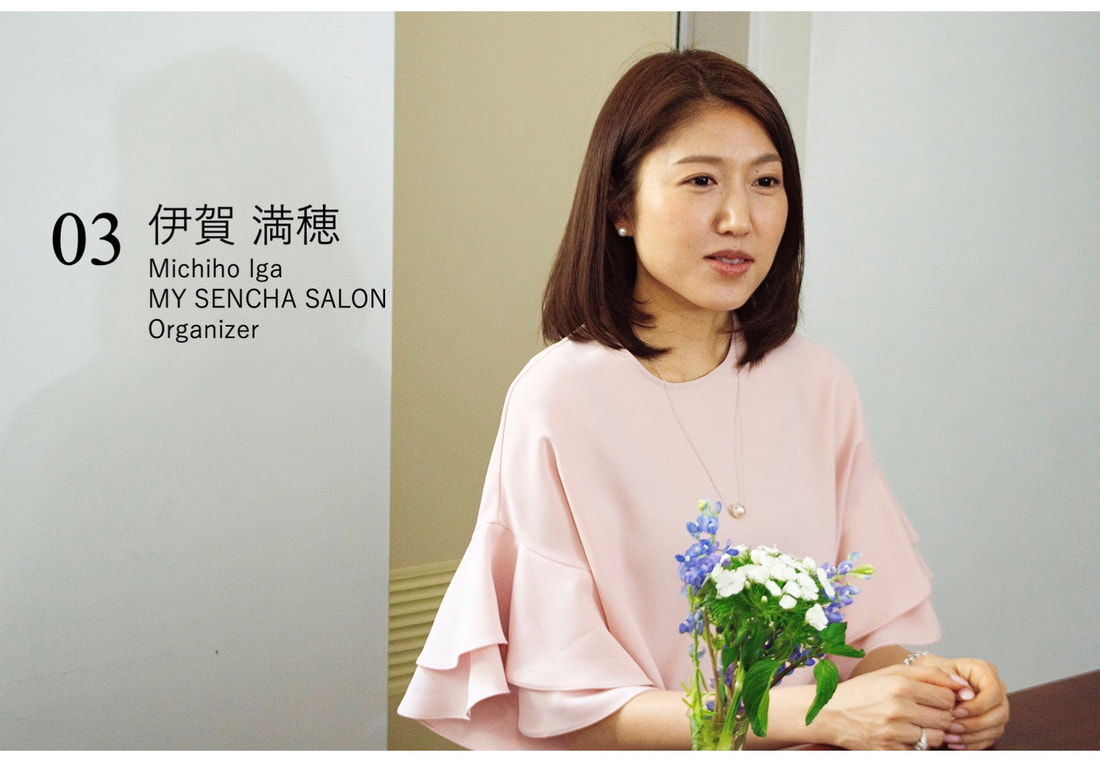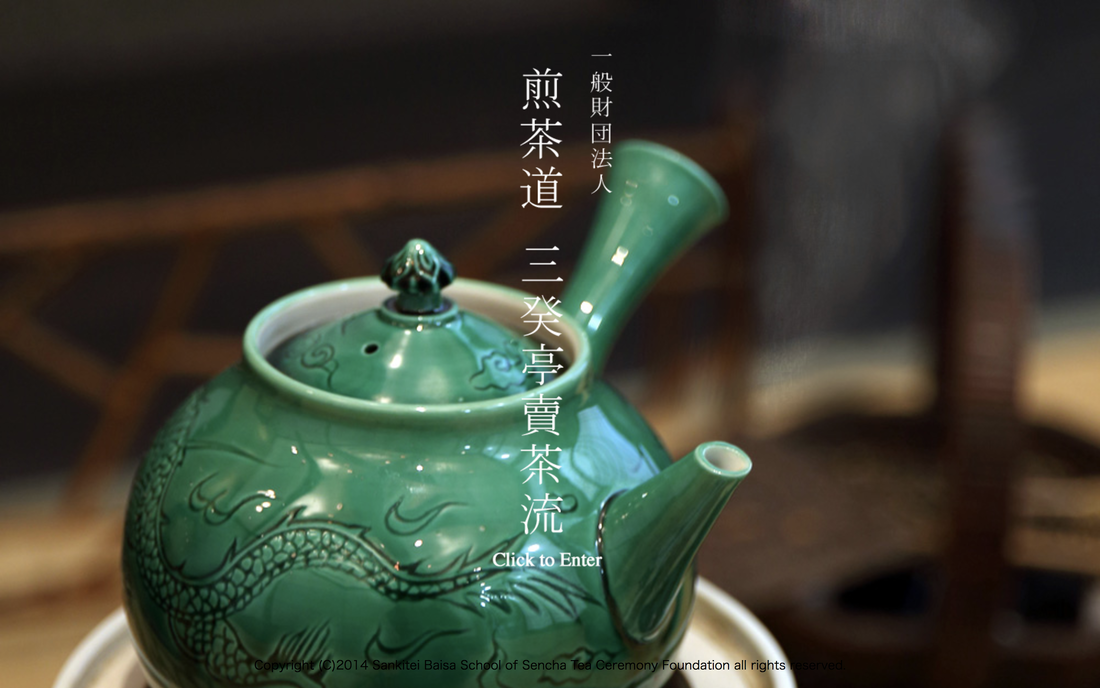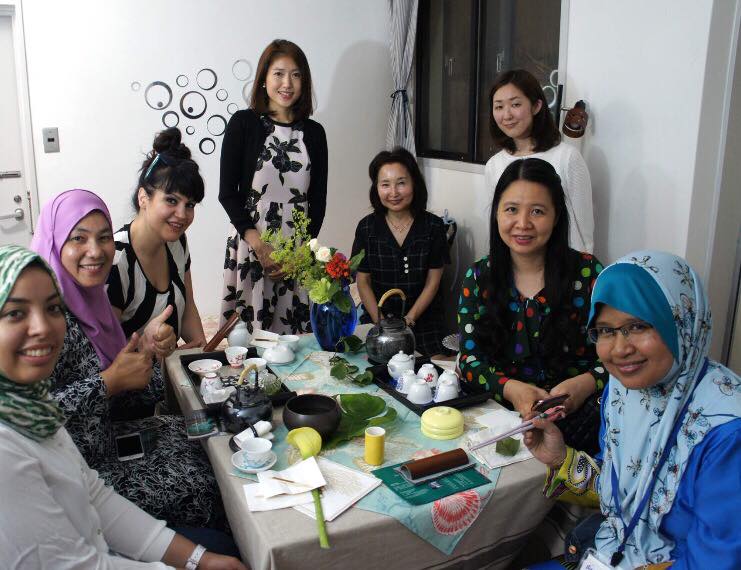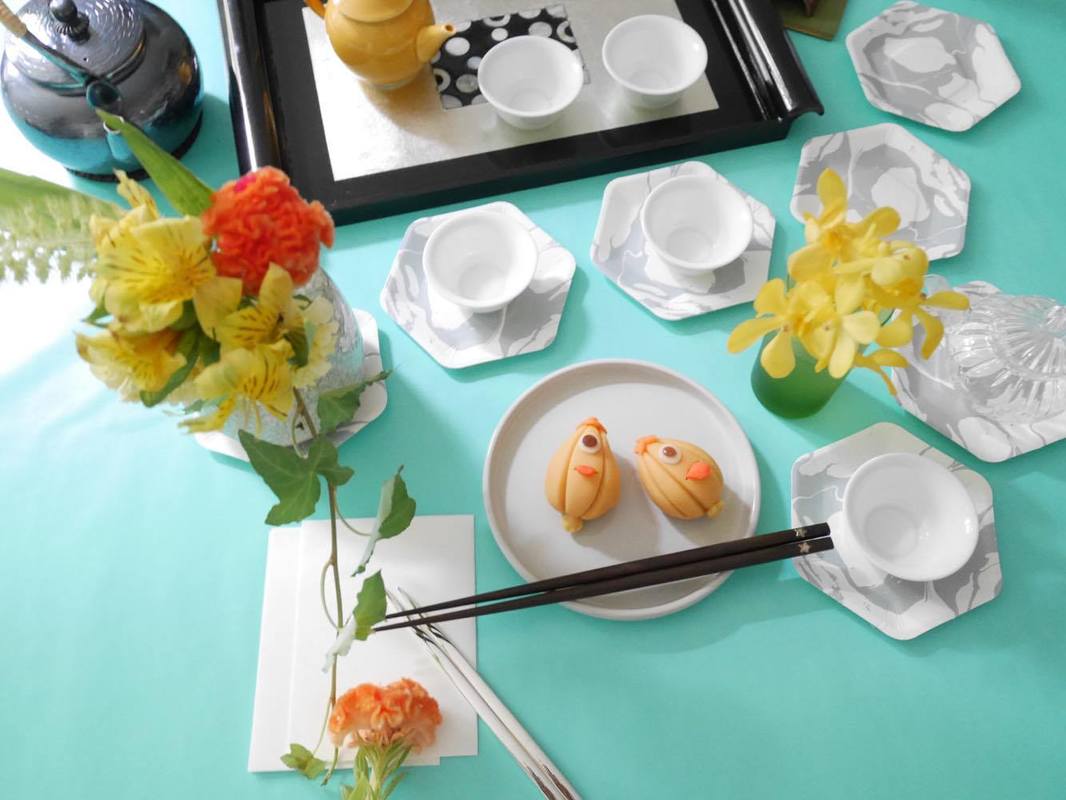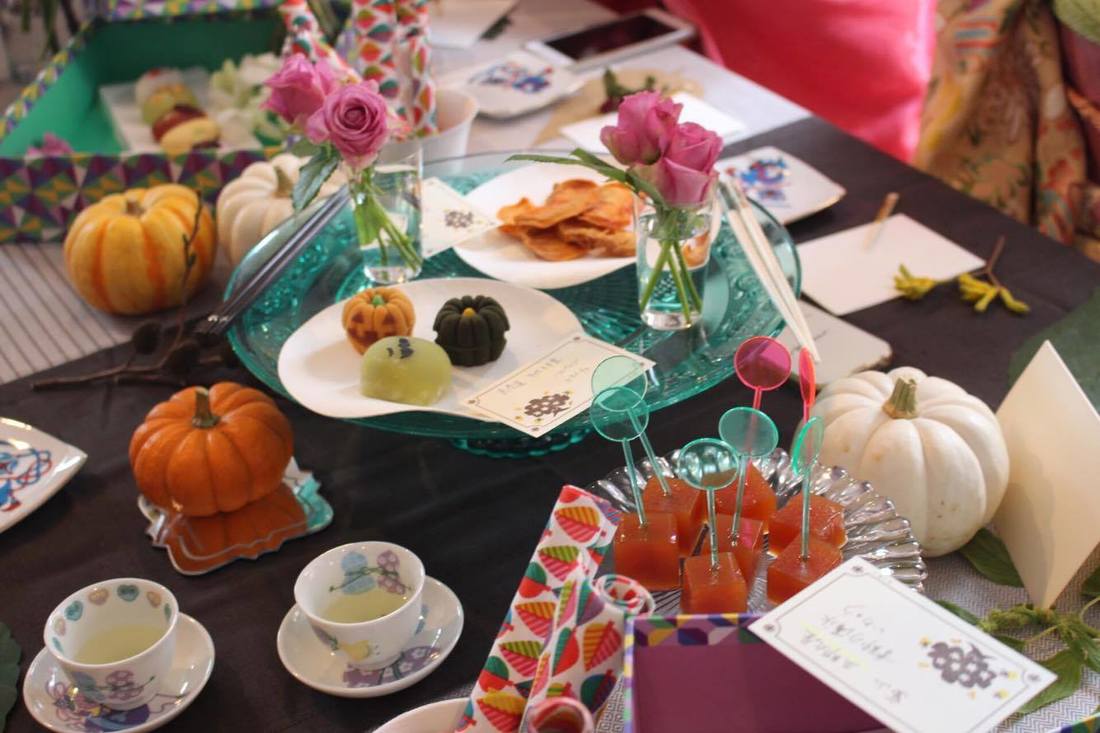|
We heard that there is a former soccer kid who now works as a tea and flower entrepreneur. We interviewed him about why he was attracted to those practices and what he would like to convey in the future. Interviewee Profile Yuki Okamoto The 10th generation of Hosokawa Onryu Tea School and Hosokawa Mishoryu Ikebana School Successor of Headmaster. He has a unique career path of playing soccer in college, working at the Japanese largest HR technology company, and becoming a tea and flower artist. He operates, practices and manages events under the theme, "Delivering the best emotional experience of your life through tea and flower". He has held tea ceremonies in New York, Kyoto, and at the United Nations Conference. His own practice classes are held in Tokyo, Osaka, Kyoto, and online. He is also involved in marketing operations based on his previous work and experience in tea ceremony management. He is in charge of marketing operations for several businesses, including a yoga studio in Tokyo and a salon in Gion area in Kyoto. He aims to help people and things that have value but are stagnant to be properly communicated to the world. https://www.instagram.com/ukiukichachacha/ I want to make people smile with my creations.- Please tell us about Hosokawa Onryu Tea School and Hosokawa Mishoryu Ikebana School. We are the head of a tea and flower house that has been in Kyoto for 170 years. My great-grandmother was the ninth generation, and the next generation will be the tenth. Generally, tea ceremony and flower arrangement are practiced by separate schools, but the Hosokawa Onryu Tea School and Hosokawa Mishoryu Ikebana schools have been practicing tea ceremony and flower arrangement simultaneously since the first generation, making them a rare school. - Were you aware that your great-grandmother was Iemoto (the headmaster of the traditional practice) since you were little? My family was in Nara, and my great-grandmother was a tea and flower teacher in Kyoto, or so I thought. I myself was devoted to becoming a soccer player, and I thought that tea and flowers were something that had nothing to do with me. - How did you go from feeling like you had nothing to do with the world to deciding to take over as Iemoto? Since my childhood, I have always had a strong underlying desire to make people smile with something that I have thought up and created myself. One of the major turning points for me was when I saw a parade entertaining men and women of all ages at Disneyland when I graduated from high school, and I was struck by the idea that I wanted to be the one to create such a parade. When I entered university, I took a break from soccer, which I had been involved in up until high school, and reexamined who I was, which is when I decided to start practicing tea ceremony and flower arrangement seriously, as they were the two things that were closest to me. I started by eating sweets in the tea room and just relaxing, and then I practiced in between university classes. I was so happy when everyone commented on how delicious and relaxing the tea was. I realized that I could recreate that feeling I had at the Disney parade with tea and flowers. How we should translate traditional culture to today- Is there any difficulty in conveying traditional culture to young people? It is difficult to translate for each recipient. For many people, traditional culture is a distant world that has nothing to do with them, just as I felt that way when I was a child. It is important to find out how to make people who think so think, "Actually, it might be relevant to me, too". I try to break down their interests, understand what they want to achieve and what they are looking for, and then tell them what they can do through tea and flowers, and make suggestions on how to integrate them into their lives. In order to do this, I try to keep the same sense of myself as everyone else through my lifestyle and work. I am currently involved in 60-70% tea ceremony and flower arrangement, and 30-40% business planning and marketing, but I also value the sensations I feel every day. I also try not to focus too much on tea and flowers on social media, which is a trial and error process, and collaborate with various events such as yoga and DJ events to create the first point of contact and interest. - We heard that you have experience studying abroad. How was the reaction abroad? When I was an undergraduate student, I studied abroad in New York for a year. The tea parties I held several times were attended by local people and students from various countries. However, since all of them were interested in Japan but did not know much about it when it came to Japanese culture, I would get blank stares if I did not adequately explain the virtues and values that are taken for granted and held as common knowledge in Japan. For example, why it takes so much time to drink a cup of tea, or why old or unfinished things are considered beautiful, etc. I had a hard time successfully expressing these unique Japanese sensibilities. - Is it the result of that trial-and-error process that led you to propose that "the tea ceremony is a spa?" In thinking about how to convey a uniquely Japanese sense of beauty that is not universal, I thought about various ways to compare it to something that would be easy for others to understand. One of them is the analogy of a spa. Winter in New York is very cold. When I arrived in an unfamiliar place and soaked in hot water for the first time in months at a hot spa in the backyard of my homestay family, I realized that this feeling of relaxing my whole body, or rather relaxing from the bottom of my heart, was similar to how I feel when I drink a cup of tea. Since then, when I use the spa analogy when talking with people from overseas, I often get a sympathetic "I see" from them. Familiar examples are necessary not only for people from overseas, but also for Japanese who do not have the opportunity to experience traditional culture. Especially in Japan, people often have a preconceived notion that traditional culture is difficult because of the forms and manners involved, but I would like people to know more about the feeling of relaxation and forgetting time that lies beyond that. I want to spread happiness from my reach- How have your values changed due to the pandemic? I have always had a consistent desire to be a creator, to support the conveyance of attractions, and to create excitement and joy for others. However, after the pandemic, I began to think more about "for whom". It is a change that has made me want to expand the circle of happiness, starting with my own surroundings and then to those around me, starting with those within my reach. I also began to think about a new definition of happiness. I believe that there are two types of happiness: one is caused by external factors and the other is caused by internal factors. The former is staying in a luxury hotel or eating a delicious meal. Of course, these are also happiness, but in the latter, even when you eat the same meal, happiness can be unlimited by enhancing your mood and using your imagination. - What are your plans for the future? I would like to spread the concept of enhancing a sense of happiness through the tea and flower. For example, the act of focusing on each action of drinking tea is connected to the concept of mindfulness, and I would like to organize events that go beyond tearooms to offer this experience in a variety of locations. I am looking forward to organizing offline events as soon as possible, as online cannot replace the experience of direct contact. Interviewer: Kaoru
0 Comments
Torahiko Izumi balances his work using cutting-edge technology with passing on skills that have been handed down since 1656. We asked him about his thoughts on living in the world of manufacturing, which has not changed in the past or in the future. Interviewee Profile Torakichi Izumi (Seikichi Izumi X) Trained by his father, Seikichi Izumi IX, Izumi began his training as a lacquer brush artisan at an early age. He is the only person in the world to have inherited the traditional Edo technique, which has been passed down orally from one generation to the next for more than 360 years since Seikichi Izumi I. While training as a lacquer-brush artisan with Seikichi Izumi IX, he is also working for the creation of new industries and a new ecosystem in traditional culture, and for the promotion of cultural arts and the development of the cultural economy in Japan. Torakichi Izumi, Lacquer Brush Artisan (Seikichi Izumi X) Official Page https://www.torakichi-izumi.com/ As a person who connects history- First, please tell us about the lacquer brush. Lacquer brushes are brushes specially made to apply lacquer beautifully. They are used by lacquer craftsmen and artists, including living national treasures, and are also used in the restoration of cultural properties such as temples and shrines, national treasures, important cultural properties, and world heritage sites. In 1656, Seikichi Izumi I invented Japan's first lacquer brush with the three characteristics of "using human hair," "pencil shape with the hair running all the way to the end," and "hardened hair board made of barley lacquer". For more than 360 years since then, Izumi Seikichi has been the only company in the world that has continued to carry on the traditional Edo technique by oral transmission of the technique from one generation to the next. The traditional Izumi Seikichi Brush, which has been handed down from the first generation, still uses 100% Japanese hair of old kamojis and century-old Kiso hinoki cypress as materials. - When did you first become aware of the possibility of taking over the family business? Ever since I was a small child, I always helped my father make lacquer brushes. It was not until I was 20 years old that I decided to become a lacquer brush maker seriously. For many years, together with my father, I have met and talked with restorers, people who make materials and tools, and artisans of the lacquer art. In the process, we learned that if the lacquer brushes were lost, some of the wonderful Japanese history and traditions that have continued for thousands or hundreds of years would cease to exist. Of course, I have no intention of being proud that I am carrying the history and traditions of Japan on my shoulders, but I came to believe that I am connected to such wonderful things and that I can support them behind the scenes. Since then, I have been determined to push forward on my path as a lacquer brush artisan. - Has the method of making lacquer brushes remained exactly the same for more than 360 years? The production process has not changed at all since the time of the first generation. Of course, there are several types and brands of lacquer brushes that we make, but the Seikichi Izumi brush is the pinnacle of lacquer brushes, and we use the same materials as the first generation. However, as those who know me well know, I like to try new things. After the first generation, each of us has tried various ways to make a better product, but in the end, the way of the first generation is still the best way to make the best lacquer brushes. We have tried many things, especially in the last few decades when technology has made remarkable progress, but we still can't surpass it. Looking out to the wider world- In addition to being a lacquer brush artisan, you have many other projects. Based on my work as a lacquer brush artissan, I am working hard every day to build a sustainable ecosystem for traditional Japanese culture. I also do some design work, although the balance is sometimes different. As a business designer, I was sometimes involved in new business development, PM/PdM of web services and products, and content marketing, while as a graphic designer, I was involved in the production of graphics, mainly video, director of distribution, and VR development. I don't come from a consulting background, so I tend to work on an accompaniment basis, or rather, I actually work hands-on or physically in the field. I simply like to be in the field. When I explain my work in this way, I am often told that people don't understand what I do, but it is like working two or three full time jobs at the same time, so inevitably my stories become more complex. - You must be very busy everyday! It may seem as if I am doing completely different projects, but in my mind, they are all connected, and making lacquer brushes and my other jobs are all about "monozukuri" (manufacturing). I originally became interested in filmmaking after making a film with friends at a high school festival, and I started tinkering with Adobe applications in college. In order to gain more practical skills, I started working part-time in advertising and design. I realized that in order to create better designs, I needed to get involved in the business field, so I started participating in business contests. I later won the grand prize and joined the company that sponsored the contest as a new graduate to start my career in the business field. - Where does the energy come from to constantly try new things? After all, I love making things, and I want to "keep making good things," so I think that naturally gives me energy. I think it is also because I simply like doing new things. Modern manufacturing really involves the interaction of many different elements, and in order to continue to make truly good products, it is necessary to deepen our understanding of each element and pursue its quality. That is why I believe that I have to study and challenge myself to learn new things every day. In order to continue to produce good lacquer brushes, for example, it is necessary to consider the business area at the same time as pursuing the adjustment of the planer to shave the board. In particular, since lacquer brushes are tools, it is not enough just to produce a masterpiece for a moment, but it is necessary to continue to provide the best products in a stable manner at all times. I entered a company as a new graduate because I vaguely felt that in order to continue my idea of "good manufacturing" in the future, I needed to come into direct contact with business, technology, and creativity, and learn about the world of the future where these elements will blend together. Bridging cultural tradition and the world- It seems to me that you are working at both extremes: technical transmission from 1656 and cutting-edge technology. When I work with lacquer brushes and traditional culture, I often have moments when I think about the "accumulation" that has brought us to the present. I often think about my own ancestors. I feel that the past, the future, and the present are in continuity. At the same time, I sometimes feel this way when I am doing modern work today. I believe that there is a commonality in the universality of manufacturing, but since every technology is based on the accumulation of our predecessors, we must first learn from the past in order to do something new. For example, when you want to render graphics in real time, you have to think about the calculation formulas and game engine architecture running behind the scenes, how the human eye is structured and why it perceives things the way it does, and what light and waves are in the first place. I am an amateur because I did not study such things at university, but I think that in the end, basic technology is still important. At least in my case, even though I am working with the latest technology, I do not feel detached from the past, but rather feel that I have much to learn from the past and my predecessors. - Do you have a goal to be the only one in the world to inherit the lacquer brush technique? The first and most important thing is to continue to hone my skills as a lacquer brush artisan and pass them on to future generations. I am convinced that I can only do this because I am involved not only in the field of traditional culture, but also in business, technology, and creativity. I would like to help bridge the gap between traditional culture and other areas through collaboration and co-creation with a wide variety of people in order to implement a sustainable ecosystem of traditional Japanese culture in society and to achieve this goal. I believe that this is the meaning of my name, Seikichi Izumi X, and that it is my destiny and what I should spend my life to accomplish. Interviewer: Kaoru
Photographer: Ryo Kawano We spoke with a tatami craftsman who, after a career working for a venture company and as a computer graphics creator, says he wants to "make the tatami industry more exciting. We got a glimpse of the future of tatami. Interviewee Profile Hiroyuki Kawakami Born in 1980. He started his apprenticeship under Hiroshi Yanai at Yanai Tatami mat store in Ikegami, Ota-ku, Tokyo in 2010. Currently, he is based on manual work, which has become rare in the industry. Obtained 1st class tatami technician in 2018. Engaged in tatami work for general housing, temples, tea rooms, and ryotei (Japanese-style restaurants). Everything is an experience, don't be afraid to struggle- We contacted you after seeing your appearance on the TV program, but we never thought we would be able to talk to you in this way. I was happy to know that my appearance on TV could lead to this kind of encounter. - You have had an unusual career, given the image of the so-called tatami craftsman in town. Could you tell us what you have been doing up until now? I was born here in Omori and spent my childhood through high school here. In elementary and junior high school I was on the baseball team, and in high school I attended a Tae Kwon Do dojo. After college, I went to the Kansai region and became passionate about lacrosse. After graduation, I returned to the Kanto region and first joined a planting venture company. After working in sales, I moved to a CG production company and worked as a CG creator. Then, a few years ago, at the age of 30, I entered the tatami industry. - I think there are no tatami craftsmen who were in venture companies or were CG creators. Did your father want you to take over the business from your childhood? Actually, that was not the case. Rather, I never helped him because I was told not to touch anything (laughs). Naturally, I never had the slightest idea that I would take over the business. I was just an ordinary baseball boy who liked to play games. - What was the turning point in your life when you became a tatami craftsman? First, I went to Kansai in college and joined the lacrosse team; second, I met a manager who trained me at a planting venture; and the third is that I joined a computer graphics company. What runs through all three of these is, "Everything is an experience, so don't be afraid to struggle". This is something my father said that has left a deep impression on me and may be ingrained in my mind. Tatami still has a lot of potential- The market for buildings that use tatami is shrinking compared to the past. Is there anything you have noticed or felt because you have been in a world other than tatami? In fact, the demand for tatami is decreasing rapidly. I don't think the impression Japanese people have of Tatami is a negative one. I think that tatami rooms are relaxing and reassuring. Nevertheless, it may be that Japanese people are losing interest in Tatami these days. I would like as many people as possible to know what Tatami is before it disappears. The history and effects of tatami are surprisingly little known. I feel that tatami makers are also required to make efforts to let people know about tatami itself. - What is your vision for the future, now that you have entered the tatami industry? First of all, we would like to focus on communicating what tatami is. There are various types of tatami and various methods in the process of making tatami. When I receive a request to change tatami, I try to fully explain them to the customer and make sure that they are satisfied with the choice. In addition, tatami makers like me who base their business on hand-sewing have almost disappeared in Japan, but I would like to make the most of the style of tatami that can only be done by hand-sewing. I also want to eliminate the impression that tatami is tacky. I am using my CG skills to create various space designs using tatami on my blog. I think tatami has a lot of potential. There are still things that can be done. In a sense, it may be almost like a gamble. That is why I want to figure out how to do it in this adversity. (Examples of CG work produced by Hiroyuki) It's the essence that shows up in a crucial moment- What is the path you are going to create? I think it is a path that no one has taken. My goal is not just to make and sell tatami. I would like to make the tatami industry more popular by creating coordinated Japanese-style spaces in any place, not only in Japan but also in the world. I have the weapons of making tatami by hand, the weapon of knowing the world outside the tatami industry, and the weapon of being a creator. I believe that by making the most of these, I can make new proposals. - Is there something you always keep in mind? I strongly believe in the concept of "It's the essence that shows up in a crucial moment". I believe that a person's true nature comes out when something unexpected happens. I believe that many unexpected things will appear on the path I am going to take. I would like to continue training so that I can always react in the best possible way at such times. I have a bit of a sportsman's side to me now (laughs). But I think so. I don't like the word "dream," so I want to make it a goal, not a dream. Interviewers: Yuki Kitamura, Kaoru
In the town of Ueno, we met the heir to Chanoyu, Japanese tea ceremony. We asked him about his philosophy, which is to carry on the long tradition of the tea ceremony while striving to bring it to a new audience that has not been exposed to it before. Interviewee Profile Hiroyuki is the successor to the Iemoto of Edo Senke tea school. Upon graduation from Waseda University, he trained at Mushanokoji Senke Kankyuan in Kyoto. Since returning to Tokyo, he has been engaged in activities to spread Chanoyu throughout Japan, including public lectures at Tokyo University of Science. About Edo Senke Edo Senke is a school of tea founded by Kawakami Fubaku (1719-1807). The current Iemoto is the 10th generation. Daimyo (feudal lords) who learned the Chanoyu in Edo brought the Edo Senke style back to their hometowns when they went on daimyo's missions, thus spreading the tea ceremony throughout the country. The atmosphere of the school is said to be free and flexible. Life as a tea master- What are your days like as a tea master? I am often asked this question, but it is certainly not well known. There are two main types of work for a tea master: on-site work and management of the school. On-site work includes planning and organizing daily practice, tea ceremonies, and events, as well as maintenance of the garden and tearooms, and daily cleaning. The job of managing the school involves thinking about how to promote this entire organization, the Edo-Senke, and executing it. This is also an important job, as there are many people throughout Japan who study in our school. - The tea ceremony may be relatively well known among traditional Japanese culture. But many people are wondering what it is really like. It is a difficult question to answer simply, but when I am asked "what is Chanoyu?" I answer that it is "to create a pleasant time and space with matcha tea as the central medium. Although what we do in the Chanoyu is diverse, it is basically "to plan and entertain guests at a place where tea is served. A full-course tea ceremony is called a chaji, and if the chaji is the real event, then the practice is to make the tea ceremony as good as possible. In order to serve a delicious powdered green tea in a stylish manner, we practice etiquette and manners. We also improve our knowledge and insight into the classics and art in order to think about how to arrange and set up a tea ceremony. In a full-fledged tea ceremony, not only is tea served, but food and drinks are also served. You may imagine it as a home party. A time-consuming tea ceremony can take up to four hours to complete. In a tea ceremony, matcha (powdered green tea) is served at the very end. Tea is served only at the end of the tea ceremony. And yet it is named ‘chaji (lit. Tea-setting)' because matcha is the climax of the tea ceremony. So the sake and food that have been enjoyed over a long period of time are the prelude to make the climax of the tea ceremony, the matcha, a more pleasant time. Creating by myself- You started working in the world of Chanoyu after you graduated from university, but you have been involved with tea ever since you were born, right? What kind of presence did tea have for you? Tea is a natural part of my daily life, and I have been making and drinking tea since before I can remember. For example, I used to make and drink matcha in the kitchen while eating snacks. My daily life itself was closely connected to tea. People who came from outside to attend tea ceremonies and practice were like distant relatives because they had been there for as long as I can remember. Even people who come now sometimes tell me about my childhood. That is how much tea has been a part of my life. - Do you think that what you loved in your childhood is connected to what you now enjoy in your involvement with tea? When I was little, I loved to hang out with my friends. I longed for things that were not in my own home, but in my friends' homes. In my parents' house, there is no TV in the living room. At mealtime, there would be a cartoon for kids on the air, you know? At school, everyone is talking about those cartoons, but I can't join that conversation. I was very jealous. Also, there were no video games. This is because my parents are really analog people, and my father doesn't even have a cell phone even now. It's a bit of a problem for people around him, isn't it? Haha And in terms of what has led me to where I am today, I think it is the fact that I make things by myself. I liked arts and crafts and drawing, and I liked to create mechanisms. When I played with my friends, we created various games by ourselves from scratch. Now that I think about it, I think it is fun to create my own works, tea ceremonies, and work. It is fun, isn't it, to "make it yourself"? Even these days, I "make it myself" by making my own tea utensils, organizing tea ceremonies and study groups, and gathering people together, and that kind of thing is nice. Tea Ceremony for a pleasant time- Even though it was fun to "make it on your own," entering the world of the tea ceremony is a path that not many people take. Was it a big decision for you? I thought about this at various times. As I mentioned earlier, practice and tea ceremonies are often held at home, and the world of tea is there. Although I have never been specifically asked by my father, who is the head of the school, to take over, there are many people who are not related to me by blood, but are related to me like relatives. I often thought about them. I guess I made my decision when I was in college and job hunting. I had received job offers from several companies. But the deciding factor was that the people at our school told me that there was a job they wanted "Hiroyuki Kawakami" to do. I apologize if this sounds arrogant, but at least for a general company, it doesn't have to be me who joins the company. Someone else will do the job that I might have done as a new employee. But in the world of tea, of course, someone else could take over the style, but there was someone who was happy for me to enter the world of tea. I felt that I was so blessed to have someone who said, it has to be Hiroyuki Kawakami. When I told this to my father, he was very happy. I vividly remember the look on his face. I was happy too. - What only you can do, that was the deciding factor for Mr. Kawakami, wasn't it? What is the best tea ceremony for you? Is it "a tea ceremony where one can have a pleasant time?" One of the purposes of art and culture is to create a pleasant state of mind for someone. For example, I was a musician in college, and even music can provide a pleasant state of mind through performances and performances. This concept of conducting tea ceremonies to "create a pleasant state of mind" for others is also connected to the guiding principle that I usually uphold. That is, "to spread the concept of tea in the best possible quality". Good quality means that people who come to a tea space for the first time with no prior knowledge of the tea ceremony will be impressed with the quality of the tea. There is an assumption that the smaller the number of people at a tea ceremony, the deeper the experience, but that limits the number of people who can participate. But if the number of participants is too large, it is impossible to have a deep experience. I always try to find the right balance between the two. A rich circle of people and serene solitude- As I listen to you, I was reminded of the book "Japanese Tradition" by Taro Okamoto. In the book, he wrote, "Tradition is something that changes while inheriting the times". Is there any change you would like to bring about in the world of tea? The essence of tea is to create a pleasant space with matcha as the central medium. I believe this will never change. Our ancestors "carried on" the tradition, but they also "created" it. Even if we copy only the form, if we cannot "create" or "change," I believe that we have not succeeded in passing on the action and spirit of the tradition, and that it has become a tradition in form only. And what I go back to is to create a state of quality. When I do something new, I want to make sure that the people who experience it for the first time really feel good about it. I want to inherit it essentially by going back to that. - Up to this point, I have mainly asked about tea. Lastly, can you tell us about yourself? I feel that you are always surrounded by many people and that you have a strong human relationship with them. What do you value in life? What do I want to have for my own happiness? I think, I want a rich circle of people and calm solitude. I like meeting and talking with people. At the same time, I also like to be alone and silent. I think I want a balance between the two. I think this comes from my baseball experience in middle and high school and my music experience in college. When you start working, it is difficult to get everyone in the studio at the same time, isn't it? That is why I started home recording.It is fun to record with a guitar connected to a PC. I like to stay up all night without sleeping and face the music. Even if it is not music, I also like making teacups and other things. I recently spent a week in the mountains. I took a week's vacation and brought my instruments and equipment. So for the first half, I was alone all the time and playing music. In the second half, my friends would come over and we would have barbecues and sessions. You see, I don't have any workmates. Maybe that's why I'm looking for friends and colleagues of my generation outside. I feel like there are people around me now who are a good match for me. With such friends, I feel that the pieces of my life are coming together. That's how I feel now, that "a rich circle of people and a calm solitude" is fulfilling. Interviewer: Yuki Kitamura
Translator: Kaoru Continuing from the previous article, we interviewed Kohei Kobayashi, the fourth generation of Edo-kiriko Kobayashi. In the first part, we asked about the history of Edo-kiriko Kobayashi and how he decided to take over the business after his experience in America. Designing accessories to collaborating with photographers- So did you tell your father that you were going to succeed him when you came back from the U.S.? I told him casually, without any particular formality, and I came to join his workshop. My father rarely taught me any tricks, and I practiced the patterns on my own, but as a result, I learned more skills on my own, which I use and connect to various things. I had to be able to make one of the vessels by the time I graduated from the university, so I set various goals for myself and kept practicing. Particularly in my third year of university, I went into the studio in between classes and used the time that others were working hard for job hunting. - I really like the amber color of the pieces you have lined up here. I hadn't seen much of it before, but it's a wonderful color. Amber is a color that has become increasingly popular in the last few years. There seems to be a time when it was just as popular as it was decades ago. It looks like a new design, but it's actually been around for a long time. The designs are weeded out according to the popularity of the time, and the best-selling ones naturally remain. It is possible that new designs will be created in the future to meet the needs of the times. On the contrary, transparent ones are the standard. Edo-kiriko is basically transparent, but Satsuma-kiriko, on the other hand, uses thicker colored glass, which results in a gradation in the cut area. Colored Edo-kiriko is characterized by the contrast between the color of the colored glass and the transparent base color when it is cut into small pieces. - Are there any new customers who have recently started to purchase your products? We used to have a lot of older customers, but recently, as the recognition of kiriko has increased, younger people in their 30s and 40s have started to buy our products. In the past, the demand was mainly for gifts, but now I feel that more and more young people are buying for themselves. - What do you think is the reason for the increase in recognition among younger people? I think one of the main reasons is that the downtown area has been highlighted and Edo-kiriko has attracted attention as a craft, thanks to social media and the Tokyo Sky Tree, which has given people more opportunities to learn about Edo-kiriko. It seems that kiriko is becoming a part of people's daily lives, as it is introduced in the media, used as a fixture in hotels, and increasingly sold in department stores. I would like to convey the value of faceted glass along with the story of each piece, which is created with great care. - Recently, you have also been working on accessories. I have been searching for a way to enjoy Edo-kiriko other than glasses and other tableware, and started making accessories around 2014. In order to make the younger generation more aware of the appeal of glass, I launched a brand and am constantly searching for ways to make better products. While I am fundamentally determined to make what I think is good, I am also very interested in exploring the possibilities of glass, such as interior objects, in addition to accessories, so that the younger generation and people from various fields will be interested. I am always thinking about what I can do with glass. I am also interested in collaborating with other genres, and I challenged myself to create a joint work with a friend who takes art photographs using the classic technique of wet plate photography. The photo of Sakamoto Ryoma, which you all know, was taken using the same technique, but in wet plate photography, the entire glass plate acts as a film, so the kiriko cutting can be applied on the photo. We spent a lot of time together outside of work to create these works and exhibited them at the gallery. I would be happy if they reach people who would like them as works of art. Interview: Kaoru
Translation: Kaoru At the foot of the Skytree, in a town with a downtown atmosphere, I met a young Edo-kiriko craftsman who continues to take on new challenges. Kohei Kobayashi, the fourth generation of Edo-kiriko Kobayashi, has been creating products that capture the hearts of young women through the creation of accessory brands and the use of SNS. In this interview, we asked him about his experiences overseas that led him to realize the appeal of Kiriko cutting glass, and the future possibilities of Edo-kiriko. Interviewee Profile 1987 Born in Koto-ku, Tokyo 2010 Graduated from Meiji University, studied Edo-kiriko under his father 2012 Selected, 5th KOGANEZAKI Vessel Shape and Contemporary Glass Exhibition Excellent Prize, The 8th Tokyo Traditional Craft Challenge Grand Prix 2013 Selected, 25th Edo-kiriko New Works Exhibition (Awarded Prize '15, '16) Edo-kiriko Young Craftsmen Exhibition at Itochu Aoyama Art Square, Tokyo (2002-2006) Kohei Kobayashi Glass Exhibition at Mitsukoshi Art Salon, Nihonbashi, Tokyo (2002, 2003) 2014 Selected, 54th East Japan Traditional Craft Exhibition, The 61st Japan Traditional Craft Exhibition, Honorable Mention 2015: Selected, The 25th Traditional Craft Exhibition, Japan Established own brand "tokoba". Started selling jewelry. 2016 Exhibition "condense" at Gallery QUIET NOISE with photographer Satoru Koyama, wet plate photography and Edo-kiriko. 2017 The 9th Snow Design Award, Encouragement Award About Edo Kiriko KobayashiIt is said that Edo faceting began in 1834, when Kyubei Kagaya engraved the surface of glass using Kongo sand. In 1881, Emanuel Houptman, who was invited from England, instructed more than a dozen Japanese in cutting techniques, and one of them was Tokumatsu Ohashi (grandfather of Kyosen Ohashi). In 1908, Kikuichiro Kobayashi, who was 12 years old at the time, became an apprentice of Tokumatsu Ohashi. After that, Hideo, Toshiro, and Kohei inherited the technique, and it has continued to this day. Cut glass that came over from England. To my grandfather, father, and son.- It's been a while since I've been to Sumiyoshi, but it's a wonderful town with an old-fashioned Tokyo feel. Have you lived in this area for a long time? Yes. I have been living in the Sumiyoshi area of Koto-ku for 30 years since I was a child. I sometimes ride my bicycle to Kinshicho and other nearby places. Recently, the area has become more crowded due to the construction rush, but it is also a place where I feel at home because it is surrounded by greenery with parks nearby. - What kind of childhood did you have? I was a child who loved to play outside. When video games became popular, I spent my time at home with my friends, playing games and getting bad eyesight, just like the other kids around me. If anything, I preferred to move my body in sports such as ball games rather than create something. - You are the fourth generation of Edo-kiriko Kobayashi, how did you inherit the business? My great-grandfather was the first generation. My great-grandfather's teacher was Mr. Tokumatsu Ohashi, the grandfather of Kyosen Ohashi. Tokumatsu Ohashi was one of several people who received instruction in cut glass from an Englishman named Houptman, who was invited by the Japanese government, and his techniques developed into Edo-kiriko. The technique of cut glass originally came from Europe, and until then, the term "Edo-kiriko" did not even exist. This is a picture of the factory in the days of my grandfather, the second generation. From left to right: my father, my grandfather in the middle, and the apprentice on the right. There are tools hanging in the back. In the old days, the belt you can see in the foreground was connected to a single motor to turn several machines. It's analog, isn't it? This is a photo of my father. In the old days, glass was shaved by pouring sand called Kongo sand (emery) on the glass. The detailed process was different from today, and it took more time and effort than today. Nowadays, it is possible to use a diamond wheel, so I can learn the technique much faster than before. Seeing the joy on her American host mother's face, she decided to follow in her father's footsteps.- Did you naturally want to take over the business after watching your father's work? I grew up watching him work, but at the time I didn't particularly want to do it myself. It was a normal sight to see my grandfather and father working in the workshop, and I had little interest in it as a child. I wasn't the type of person who was interested in looking at or touching the glass up close, and I don't think I ever tried to cut it myself. I don't think I ever tried to cut glass myself, but I do remember that my apprentices at the time took good care of me. I have had two apprentices since I can remember, they made our house very lively. - Did your father tell you that you should be his successor? My father had been helping my grandfather since I was in elementary school, but he told me that I should get a stable job. At the time, the company that subcontracted cut glass as its main business pulled out when I was in high school, so we had to sell products on my own, and my father could not encourage me to take this job. - What was the reason why you still decided to go into the field of Edo-kiriko? It was after I entered university that I gradually began to develop an interest in Edo-kiriko. I majored in political science and economics at university, and I planned to work for a general company after graduation. However, a two-week homestay in the U.S. during the spring break of my sophomore year was a big trigger for me, and I decided to enter the field of Edo-kiriko. When I went to the U.S., my father had given me an Edo-kiriko drinking cup as a souvenir. It was just something I was familiar with from home, but when I gave it to my host mother, she was very happy. It was just a sunny day in the garden, and it was the first time I had seen kiriko glass in the sunlight, and I was moved by how beautiful it was. The cut glass itself is found all over the world, but I was impressed that she liked the fine cutting unique to Japanese kiriko. Watching my grandfather and father, I knew that it was hard work, but I still had a strong desire to do it, and to let more people know about the appeal of kiriko, which led me to be ready to follow in my father's footsteps. (... In the second half of this interview, he talks about his various challenges in exploring new possibilities of glass) Interview: Kaoru
Translation: Kaoru A little after noon on a drizzling Saturday, I visited lacquer artist Tomoya Murose at his home and studio, feeling the pleasant sound of rain drops dripping on the leaves of the trees. Tomoya Murose, whose father is Kazumi Murose, a holder of Important Intangible Cultural Property (maki-e), has been involved in Urushi lacquer art since he was a child. "The next ten years or so will be a time to create my own works, not to meet people or talk about various things," he said, as he pushed himself to work on his Urushi laquer art. Interviewee Profile 1982: Born in Tokyo, Japan 2006: Graduated with a degree in Political Science, Faculty of Political Science and Economics, Waseda University 2008: Graduated from Wajima Lacquer Craft Training Institute, special course. Apprenticed to Kunie Komori and learned Urushi lacquering techniques. 2010 ~: Participated in "Urushi, Bowls and Utsuwa by Artists" every year 2013: Exhibition "Urushi by Tokanokai" in Helsinki, Finland 2017: The 34th Japan Traditional Lacquer Art Exhibition, Newcomer Prize. The 64th Japan Traditional Lacquer Art Exhibition, Newcomer Prize Currently a member of Mejiro Urushi Gakusha (Institute of Urushi Lacquer and Cultural Properties) What is Urushi?A craft technique using the sap (lacquer) from the poison oak tree. When it hardens, lacquer forms a coating that is resistant to moisture, acids, and alkalis, so it has been used in Japan since the Jomon period (approx. 16000 years ago) to make wooden products waterproof. Various decorative techniques have been handed down to the present day, such as "maki-e," in which pictures are drawn with lacquer and sprinkled with gold powder, and "raden," in which shells are attached to decorate the surface. I came to the conclusion that I wanted to do a noble and enjoyable job that could not be replaced, creating one out of nothing.- How does your day look like? I work as a workshop, repairing cultural assets, and I also create my own works at the same time. There is work that I have to take over from my father in the not-too-distant future, but I also want to make sure that I have time for my own work, so I try to fit my work into my private time as much as possible, but I can't always say that, so it's a constant struggle. - I heard that you started your career after graduating from university, but did you know from an early age that you wanted to work in this field? I didn't think of it as a job, but maybe I was a little aware of it. I think the first time I became aware of my family's work was when I explained my parents' work at school. I think 90% of my friends probably thought that Murose's family was a potter (laughs). I felt that my friends did not understand my parents' work at all, but at the same time, I wanted them to know. - Did you have a sense that your family house was different from others? I think so. For example, during the summer vacation in elementary school, we were given a homework assignment to make a fist out of clay. I was told by my parents that it was important to understand the details such as how to capture the shape and how to make it crisp. I feel as if I was being taught the basics of art without even realizing it. However, I usually enjoyed playing with my childhood friends every day by playing NES, climbing trees, and playing soccer. - When did you start to think clearly that this could be your job? From an early age, I listened to my parents' conversations from an artist's point of view, and I think my desire to know more naturally emerged. For example, my parents often used the term "sketching ability," but I had no idea what that meant. But my parents were living in a world that I didn't understand, and they seemed to be enjoying it. It might be fine to live without knowing, but I still felt that I wanted to know what it was all about. - Did you try to learn about your parents' work when you were in school? No, not really. I majored in political science at university and was involved in various club activities, so I wasn't really interested in art. To tell you the truth, I was a bit of a klutz who often dropped things. I don't think I, or anyone around me, ever thought I would be doing this kind of work. However, I was interested in my father's work, and I thought that I could use this environment to play a role in connecting the world with my parents' work. - How did you become interested in spreading the word out there? When I was in the fifth grade, I went to the United States for the first time on my parents' business, and it left a very good impression on me. My father seemed to enjoy it, and I was very excited to know that there was so much more to the world than I knew. I felt that it was very important for me to tell the world out there and to be able to pass it on. - So your experience at that time influenced you to go into the field of Urushi? Yes, it did. When I was in my third year of college, I told my father that I wanted to pursue a career in Urushi lacquer ware. I came to the conclusion that I wanted to do a noble and enjoyable job that could not be replaced by creating one out of nothing. If you don't keep questioning and constantly updating the world you can see, you will never be able to create something that resonates with you.- I heard that you went to Wajima for training after graduating from university. In the first year at the training center in Wajima, you learn the basics, and in the second year, you create your own designs. I remember thinking, "Oh, I'm going to be doing this for the rest of my life". I was troubled by the fact that a neatly made work was not necessarily a good one. I was often disappointed when I couldn't give shape to the world view I had in mind. - What kind of worldview did you want to create at that time? It is still relevant today, but I think I wanted to create a sense of depth and atmosphere. When I was working on it, I was desperate, but when the work was finished and I was able to look at it from a slightly different perspective, it was not at all what I had expected, and I was disappointed. I think that was a good experience for me now. I felt that I had to try to look at things with objectivity while making them. Now that I think about it, maybe I didn't have enough depth. At the time, my self-assertion and desire for self-expression were at the forefront, but that didn't allow me to create the atmosphere and worldview that I wanted. As I continued to create works over and over again, my desire to create good works of art while asserting myself in order to survive became stronger. - What is the "depth" that you are talking about? It is something that appeals to you, something that moves you. In order to create something like that, you have to keep questioning the world you can see and keep updating it. A work that only asserts itself will not easily resonate with the heart. What does it mean to be alive? This is the question that I will continue to ask throughout my life through Urushi.- Has there been any change in your worldview recently? The past few years have been a very troubling time for me. What is the point of creating more new things in a world that is full of all kinds of things? What on earth do I want to achieve by using my energy to make art? It's not enough to just make beautiful things, I thought, and I was stuck. After such a period of time, I now have an image of where I want to go and what I want to achieve in my lifetime, and I am able to create works of art with a positive attitude. I would like to continue to improve my skills, focusing on creating works for traditional craft exhibitions. - Something you want to achieve in your life time ? I think I would like to be able to express my own view of the world in response to questions such as what it means to live and what life is. I am interested in thinking about the meaning of my existence and the fact that I am here now, making art, through the history of people who have gone through various periods of time. I would like to express such a theme through motifs such as plants, using what I have thought about and seen as the essence of my work. For example, there are many different kinds of academics in the world, but I think the goal is the same. Everything is a way to express the meaning of one's existence here in this world, and I believe that art is the same. Perhaps "living" itself can be described as an artistic activity. I believe that this is a human activity that has not changed. Through Urushi, I would like to continue to challenge this question for the rest of my life. Interview: Yuki Kitamura, Kaoru
Translation: Kaoru In the part 1, Ms Okudaira told us about virtues that have shaped her. In this part 2, we asked her about her passion after she decided to pursue her career in Ikebana. I feel like everything in my life is acknowledged when people tell me what I am doing is important.- What are the times you feel most fulfilled? I feel most fulfilled when customers at Okura stop by and talk to me. I was raised by Okura and its customers. Because of them, I can realize my own uniquenesses. When I am arranging flowers, I cannot see customers who are on my back. Even so, customers from abroad talk to me right away, and some Japanese customers tell me that they have been wanting to talk to me so many times and finally got encouraged to do so. There are customers who have told me that "What you are doing is very valuable. Keep it up" and "I stay at this hotel to enjoy your flowers". I cannot describe how grateful it is. - Are there any struggles while arranging flowers? Although my career is Ikebana, there is a part of me thinking that art might not be necessary or some people might not even care. Nonetheless, knowing that customers at this top class hotel recognize my work as important makes me feel like not only my Ikebana style but my whole life in which I found Ikebana so fascinating are acknowledged. I am so thankful that customers who always communicate me with their subtle feelings while their stay at Okura. Culture and art are supposed to be in our everyday life to enrich and encourage us, not to be behind glass cases.- I heard you are performing outside of Japan as well. When did you get interested in abroad? My father's job influenced me to grasp interests in arts when I was little. My father's family inherits antiquarian books store in Kanda, my uncle sells Japanese books and my father sells foreign books as the 7th generation. My father always used to call western countries and attend auctions abroad even before internet. I had a lot of opportunities to travel with him. My parents educated me to be able to do things by myself, so I always tried to memorize how to speak 1-10 and basic greetings in local languages. - What did you find interesting living outside of Japan? There are a lot of museums you can enter for free. I noticed that it has wide age groups and even permanent exhibitions are crowded, which we rarely see in Japan. I was very surprised that schools kids are sitting on the floor and sketching arts. I had an impression that museums are for adults because of the etiquette in Japanese museums. It was eye-opening that stances towards art and the relationship between art and lifestyle are different from that of Japan. - How those experiences influence you now? I was very lucky that I spent time in Okura where people and art are next to each other. Culture and art are supposed to be in our everyday life to enrich and encourage us, not to be behind glass cases. Art pieces are like mirrors that make us engage in conversations with ourselves, and how we feel and obtain change based on our ages and conditions. Recently, there are news highlighting certain exhibitions are popular and people are lining up for hours. It might be fun to go to museums after lining up long time but I would suggest to enjoy more casually. Art pieces in Okura are not in glass cases, they are as they are. I want to continue to create art that gently live in the same space with us. There way of thinking might be influenced by my memories from foreign museums in my childhood. The essence does not change, but how it looks and how to communicate should change over time.- Do you want to promote Ikebana abroad? What are required to do so? It is typical to Japanese that we do not recognize values until told by outsiders. I want to avoid the situations where Japanese people are asked questions about Japanese culture from foreigners at Olympics and reply "I do not know because I have never experienced" or "I have no idea". Now is the last timing we can pass down memories right after the war. I believe it is the last chance Japanese learn about Japan and redefine Japanese values. In Ikebana, there are technical terms such that are difficult to understand even for Japanese kept unexplained and being black box. They have to be put into simple words and stories in context that can be understood by kids, and then to be translated in appropriate English. - What kind of opportunities should we offer people around the world who are interested in / studying Japanese? It is wonderful that there are people who choose Japanese culture among a lot of choices. I especially feel there are more people like that recently. The point if how to communicate with them from our end. I think it is such a shame to let people experience culture that is just formality and without a context. We are in the world where everything is transitioning. Nevertheless, we cannot learn Japanese traditional culture in the same way as it was in the past. Therefore, it is the role for our generation, who are facing the huge transition, to reconstruct it. Fueki-Ryuko means that there is something that does not change in the end becomes bones and cores to be passed down after everything else has changed. I have to confront with myself and others just like I do with flowers in order to figure out what to be changed and what to remain the same. any a- What can we do to introduce Japanese culture to people who are not yet interested in? Recently I am challenging collaborating with completely different genres. For example, co-performing with violins and contrabasses, that never happened before, with a motto that it is important to make it happen first. My mother co-created a stage with the general art directer at the National Center of Contemporary Dance in France and performed in Europe in 2012 right before my mother took over the headmaster of Sekiso school of Ikebana. The general art director got interested in Japanese culture while pursuing creativity, and reached to Ikebana in the end. They went back and forth in Paris and Tokyo for about half a year and constructed the piece. Of course it was such a unique collaboration to begin with, they paid a lot of attention in arranging flowers as well. My mother and I were studying under Kozo Okada who established they core method of Ikenobo school (the oldest school of Ikebana), so we decided to show "Hanashomo" which showcases all the process of arranging flowers in the prestigious classical way from Muromachi period. Utensils and actions are very different from those of now. With support from Hermes foundation, we started from Paris art festival, performance at Versailles, and performance in Spain. There are many Japanese people came to see us for the special occasion and audiences from any area acclaimed us that they have never seen such Ikebana before. We had such an amazing experience. Furthermore, my twisted career pays a lot when collaborating with various genres. Some may think cultural sensibilities and knowledges are connected with talents that they are born with. However, creativity is necessary in any type of job, any stage of your life, and they emerge naturally. Originally, Ikebana was used by top leaders of warriors as a training method. It was useful to prototype team building and winning styles with the right person in the right place. Today, in the business context, people from various industries are enjoying interactive learning in order to reconsider the creation of innovation that is unique to Japanese. Does my creation encourage others to try Ikebana? - What is your most important value? I want to keep my belief in the power of affirmation. Receiving a word "thank you" and having someone back you up are pleasure and encouragement. Having you interviewing me today is a way of encouraging me and is a gift. Affirming myself as well as others is a power to find more strength and turn weaknesses into uniquenesses. It does not have to be strong interests. I think feelings like "I might be able to do it", "I guess I will try it" originate in the self affirmation. Ikebana is to face flowers that are very different from each other, finding uniquenesses, think ahead of time, and combine them to go even beyond customer's satisfaction. Continuing this process and cultivating emotional richness to coexist with nature that are special to Japanese might cause even more positive influence for people than merely feeling good to interact with culture. I wish to contribute to realizing that through the career in Ikebana. Sekiso school is a flower arrangement school that takes care of all Ikebana (Japanese flower arrangement) at Hotel Okura, as known as "60,000㎡ of art", was built as the entrance of Japan to welcome international customers. The founder and first Iemoto is Seido Iwata. She was one of the design committees who worked on the interior, furniture, amenities, and other details of the opening of Hotel Okura in 1962. The characteristic of this school is that they do not apply flowers to the rules and patterns, but it presents the beauty of flowers and branches and copy just like they are seen in the nature based on ancient Japanese customs. Yasunari Kawabata, the Nobel prize novelist, also praised "I wonder if there is a flower that exudes the heart of nature in Japan as much as Iwata's flower." http://sekiso-ikebana.jp Interviewers: Yuki Kitamura, Kaoru
Translation: Kaoru Hotel Okura is located in Akasaka, Tokyo. It is touted as a large hotel in Japan, and is a representative of Japanese hotels that "hospitate the world" by welcoming state guests and VIPs. Shoko Okudaira was born as the daughter of Seiho Okudaira, the current headmaster of the Sekiso school. This school has been involved in all the flowers in Hotel Okura since it first opened, and is now taking care of flowers in Aman Tokyo hotels as well as demonstrating and performing flower arrangements at domestic and international events. There are two parts in this interview, we asked her about her values in the first part, and her visions in the second part. Interviewee Profile Shoko Okudaira Heir to Sekiso school (Ikebana flower arrangement) / Add-on value design consultant / part-time lecturer at Japan Agricultural Management University. Graduated from Keio University, Faculty of Policy Management and majored in social marketing. Upon graduation, she was in charge of basic design for the total digital system of newspaper companies at NEC Corporation. Received the NEC President's Award for activities to propose the world standard format. While working as a free planner at Hakuhodo Institute of Life and Living, she started to be engaged in interior flowers at Hotel Okura Tokyo. After experiencing high-end marketing in the LVMH group, she joined Japan Agricultural Management University as a part-time lecturer in 2013. What is Sekiso school?Sekiso school is a flower arrangement school that takes care of all Ikebana (Japanese flower arrangement) at Hotel Okura, as known as "60,000㎡ of art", was built as the entrance of Japan to welcome international customers. The founder and first Iemoto is Seido Iwata. She was one of the design committees who worked on the interior, furniture, amenities, and other details of the opening of Hotel Okura in 1962. The characteristic of this school is that they do not apply flowers to the rules and patterns, but it presents the beauty of flowers and branches and copy just like they are seen in the nature based on ancient Japanese customs. Yasunari Kawabata, the Nobel prize novelist, also praised "I wonder if there is a flower that exudes the heart of nature in Japan as much as Iwata's flower." http://sekiso-ikebana.jp Music and flowers do not result as they were planned in the first place. There is no correct answer.- What does your typical day look like? The main activity is to arrange flowers in the entire Hotel Okura building. There is no concrete schedule for the day, but we change the flowers seasonally and monthly, and care for the flowers that change over time. Also, I am involved in the planning stage of other hotels such as Aman Tokyo as a member of the design committee and think about what kind of flowers and vessels would look best in the space. I am very grateful to have the opportunity to go beyond the field of flower arrangement and step into the area of architecture and hospitality, and search for the best solutions together. In addition, I support the current headmaster's lessons. Sekiso style does not have a pyramid structure that goes up in the order disciple-master-headmaster(家元). Therefore, even the youngest 10-year-old girl is learning in the same way as an adult. You can get injured if you do not know how to use proper tools, so we let her use scissors made by a swordsmith and Bizen or White porcelain pots just like other students. I also make use of my experience in business careers that I had gained before entering the world of Ikebana. I get opportunities to talk about innovation at some companies. - How do you work in relation with Hotel Okura? Hotel Okura Tokyo is described as a gateway to Japan to welcome clients from over the world. Seido Iwata, the first headmaster of Sekiso school, was one of the design committee when it was built. Since then, Sekiso school takes care of the decoration of the hotel with flowers. Seido Iwata founded Sekiso school when she was 60 over and continued to be active until the age of 98 in order to express the combination of static and dynamic, the contrast of yin and yang, and the harmony of nature. It is inspired by her experience of being healed by the lush grass in the blue stone valley when she evacuated to Nagatoro of Chichibu when she was little. We have been given the opportunity to arrange flowers for Okura that match each season. Our client is Okura, but the end user is the customer who stays in Okura. There are people of all ages, nationalities, and lengths of stay in Okura, so we try to anticipate the growth of flowers and trees and plant them to enjoy the changes. When the performers from Blue Note, a historic jazz club affiliated with Okura, stay here, they often watch me arrange flowers and said, "It's the same as our music." In jazz, I think there are rhythms and melodies that come out only on the spot at that time, but so is Ikebana. If the type and condition of the flowers differ depending on the season and climate, I arrange them in anticipation of growth and changes. Both music and Ikebana continue to change with time and environment, and are the art of process creating with others. - When was your first encounter with Ikebana? My mother and grandmother both learned flower arrangement, tea ceremony, and chanting of poems as woman's education, so those culture were always part of my daily life. So not because I was told to do it, but because I wanted to do the same thing that my mother was crazy about. My earliest memory is the day I helped water flowers in Okura when I was four years old. I walked with a watering can, and I remember being told to put a towel on the pouring mouth to prevent from spilling on the floor. I also remember that I was happy many guests talked to me and nervous entering into the usual world kids do not encounter on a daily basis. - Did you know you would be working in the Ikebana world since you were little? Actually, I did not decide to join the Ikebana world until I finished high school. I thought that flower arrangement was something that my mother and other “wives” would do. However, looking at my mother who continues to work hard at Okura, I wanted to know if I could preserve Ikebana from a business perspective and think about how to combine supply and demand well. What is necessary for Ikebana is to be a part of "function" of the society as it used be. In university, I studied social marketing and relationship marketing in order to understand those perspectives. It was after I graduated from university that I joined Sekiso school, and it was much later than that I started to make a living on Ikebana. Making invisible visible.- Could you tell us about your career? I joined a major manufacturer as an SIer (system integrator) in 2001 and worked for about 5 years. Partly due to the year 2000 problem at that time, the requirements for digital systemization were high in every company, and I was mainly in charge of newspaper companies. It was my job to create the requirements for a series of article-handling systems. I created a format for the TV section when exchanging articles within the company and between companies, and at the industry's global standard council held in Paris. After the presentation, the format was blessed with the opportunity to be adopted as a global standard format. I received the President's Award and a letter of appreciation from the Newspaper Association. It was a very challenging and interesting job. After that, I worked for a think tank of a major advertising agency for three years. I was involved in considering how to share the analysis results of the ideas of creators and copywriters who are constantly making hits internally, and exploring external proposal methods of thinking tools working with consumers from the product development stage, and I made predictions about economic fluctuations and consumer behavior in the 10-year cycle. I learned a lot from various projects. After three years in a think tank, I decided to fully enter the world of Ikebana. - What are your various do you have in common in your career? I think I was trying to make the personal black box of work and skill visible, easy to use, patterned, and shared as open source for everyone. The trajectory of improvement is not linear, and there should be a timing when you can overcome the wall by continuing desperately, but it is very important to recognize again what is actually happening at that time. I think that there is often no reproducibility because I have not been able to accumulate my own experience and knowledge up to that point because of the joy of overcoming the wall. I think it's similar to sports, but by visualizing and patterning the process of success and failure, you can do your job well, you can proceed with the project smoothly as a team, and the quality of what you make itself improves. All the experience I gained through my career is connected to the present. It is often said that Ikebana has a lot to do with your natural taste, and it is often thought that it cannot be easily imitated, but I do not think so. Even in Ikebana, I made a lot of mistakes and regrets, and while hitting a wall where I couldn't get out of my hands or legs, I made many patterns such as "I think I should do this in this case" and "This is the one to match this kind". We will create and build our own know-how while learning from past cases. In fact, it is inevitable from the way flower arrangement is formed that there is a commonality between the pattern formation in the creation of Ikebana and the way of doing and winning in business. - Why did you decide to enter into the world of Ikebana? When I was hospitalized for acute gastroenteritis, the only cure was fasting, I had nothing to do. I used to put the flowers I picked outside in a plastic bottle and displayed them. It triggered conversation with other patients and when I gave it as a gift, it made my lonely hospitalized life so much happier. I realized that "flowers are a great medium!" I knew the possibility of the mediation of flowers, which can transform people's feelings more than words. As it is now, overwork is a problem in the world at that time, I was always thinking about whare are the ways to make me feel at ease and make time to regain myself. However, from my own experience at the hospital, I thought that this might be the entrance to the world that can be created in flower arrangement. "Way (Dou)" such as Ikebana are one of the interfaces you can choose to live happily, understand the wisdom and experience of our predecessors, and reach them. I decided to take this path myself and work to share with many people how to live happily. Interviewers: Yuki Kitamura, Kaoru
03 What can Sencha do for women in the modern society? | Michiho Iga, Organizer of MY SENCHA SALON9/12/2019 A quiet place where you can forget about the hustle and bustle of the city, along a deep alley about 5 minutes on foot from the intersection of Omotesando. The building where the candy entangles in the milky white wall that appears in such a place is "MY SENCHA SALON" where a lesson of sencha (tea ceremony using leaf Sencha tea rather than powdered Matcha tea) is performed on the table. We interviewed Michiho IGA san, who is the organizer of the “MY SENCHA SALON”. Her father is the master (Iemoto) of Sencha. In our interview, we reveal what is the secret of Iga san who attracts women in their 20s to 40s in the world of Sencha, which young people tend to feel difficult to approach. Interviewee Profile Michiho IGA / MY SENCHA SALON As a daughter of Senyu SHIMAMURA, the third generation of Sankitei Baisa School of Sencha Tea Ceremony Foundation, she has been familiar with Sencha-do (The art of Sencha ceremony) from an early age. She graduated from The Women's Christian University in 2007. Currently, she is active mainly in Tokyo and Hiroshima as a PR of Sankitei Baisa School. In the spring of 2016, she opened “MY SENCHA SALON OMOTESANDO” to introduce Sencha ceremony in more casual way. She collaborates with Japanese sweets and kimono salons to introduce lessons, produces original tea-wares “MY CHAKI”, and provides Japanese sweets and Sencha catering service “Catering Sencha by Sanki”. She promotes the "culture of hospitality" with the Sankitei Baisa school's motto “Sencha ceremony that anyone can do anytime, anywhere". What is Sencha-do Sanki-tei Baisa School?Around 1890 a young man started on a trip throughout the country to become the man of letters. At the end of is long journey finally he found the words of Baisa-O by chance, and sympathized with "The words of Baisa-O". I wonder he knew or not that Baisa-O also had hard-traveled in his young days. It is said a man might understand the world through his own experience. Since then he improved the way of Sencha tea ceremony that he had followed the example of his father, and started to spread it as Baisa-Ryu.As the truth that he gained by his efforts-for his first step following his father's and grand father's. For 100 years, there are so many helps -various tea ceremony parties or enthusiastic flower exhibitions- of people who sympathized his idea until we were authorized as a foundation. Because of their cooperation we shared joy and pleasure, respected ,and all united. "After completion, Sench tea ceremony would be organizes as a form of arts. But the most important thing is not the system as result but our life-whether we can live our lives truly by making use of Sencha tea ceremony or not. I think the process to try it is important." This is the speech when I succeeded to the Master and I have advocated since then. For 20 years the head and branch offices have kept studying to reach for the spirit of Sencha tea ceremony by constant and steady practices. There must be some difficulties, but we are contented with joy and believe that dreams come true. - What do you usually do at MY SENCHA SALON? I provide private Sencha lessons everyday. The students are mainly women in their 20s and 40s, most of whom got to know my salon through my SNS. Recently, there are increasing numbers of collaboration events such as JICA training programs. Each lesson is mainly about space decoration, such as how to decorate Japanese sweets, bowls and flowers according to the season, students' preferences and the aura of each student. This salon is the main venue but sometimes I visit some other places as well. Our school keeps it in mind that the Sencha practice is incorporated into everyday life, not as a bride training or manner. The most important thing is to enjoy the space itself, so it is essential to work on decorations that vary depending on the person and the situation. (JICA's training program) - What are students' takeaways? I found that most people who want to try Tea ceremony but find it a bit difficult to approach are attracted to the concept of enjoying Sencha on table (Traditionally Sencha ceremony is held on the floor). There seems to be many people who think that the tea ceremony on the tatami mat requires a lot of effort to try out. I opened this salon to let people try Sencha more casually, so I am glad to know that people are feeling comfortable here. - Being born in the family of Iemoto (master), how did you start Sencha? I learned Sencha practice from my maternal grandmother, instead of my father. Many of the tools I have now have been inherited from her. I think I was in the elementary school that I helped teachers at the New Year's tea party. I really wish I could have continued, but my grandmother was very strict. So at that time, I couldn't feel much fun in Sencha. I was born in Hiroshima, but I entered a boarding school in Fukuoka, so I stopped taking lessons. My grandmother was not happy that I always used to forget many things every time I returned to my parents' home. - Did you know you would pursue the career in the field of tea? In fact, Sencha-do was not an option in the first place. My father is the master of the school, but he did not think that it is me and my brother's obligation to inherit it. My mother is a jewellery designer and my parents are open-minded, so I wanted to find a job at a general company after I graduating from university. I always wanted to go overseas so my parents let me go to study abroad when I was junior high school and high school student, and I majored in Languages and Cultures to learn about the mechanisms of English and Japanese languages and their relationship with society at university. Actually, when I was a student, I was reluctant to tell that the family business was a school of Sencha. Isn't it complicated to explain the concept to friends? I thought it would be difficult for them to understand even if I tell them that my father is the master of the school. At that time, I did not want to be different from everyone, I did not like things that seem unique, or I did not want to get that much attention. For that reason, when I was in college, I would spend most of my spare time for part-time job. Although I was still a student, I absolutely enjoyed working as a dental assistant, a sales person at a private tutors agent companies, and a back office staff at a telecommunication company. - How did you return to the Sencha world after graduating from university? At first, I joined a major cosmetics company and worked as a lecturer for about two and a half years to teach sales staff whenever new products came out. After that, I moved to a government-related company and worked for about four and a half years. My turning point was when the Great East Japan Earthquake occurred. My parents contacted me to come back to Hiroshima. It was when my father's secretary quit, so he wanted me to support the school's business. It was a right timing for me, so I decided to quit the company and returned to Hiroshima, and went back to the Sencha world. There may be fewer now, but I think there are still many people who have a negative image toward changing jobs. However, because I was able to experience various jobs, I found myself enjoying having an ownership in work. - Then you started to help your father's work? That's correct. At first it was clerical work, but my experience in financial work, such as accounting and interaction with external institutions, was helpful. After that, I supported the master and prepared for a tea parties. - After that, you moved to Tokyo and opened your own salon. How did that happen? When I was in Hiroshima, I researched a lot about Sencha-do. Then I realised that no matter where I looked, information about Sencha-do was not publicised much. Then I thought, if no one was doing it I should do it. And more and more people appeared to help me out. I also became proactive myself, since then I came to be blessed with good timing and relationships and connections with various people. One time, a friend of mine who worked for a PR company at that time invited me to organise a Sencha lesson at a kids' event. I decided to try it out with my brother and teachers of the Kanto (area around Tokyo) branch. Kids enjoyed the tea ceremony innocently and the parents who watched it were happy too. The event triggered me to get voices from various places. It's a lot of fun to convey the charm of Sencha from various viewpoints in a way that no one has yet done. - What are your challenges in the future in order to share the charm of Sencha to various people including women in their 20s and 40s who are attending “MY SENCHA SALON”? I think that hobby will not end with just hobby in the future. Even if it was not someone's job, I will need to open up opportunities where they can be in the centre, such as tea parties or events where students lead. I would like to create more places for such lessons of Sencha. Interviewer: Yuki Kitamura, Kaoru Kuribayashi Stanislaus
Place: MY SENCHA SALON OMOTESANDO https://www.my-sencha-salon.com/ |
NC InterviewExploring lives of young practitioners of Japan's artistic heritage. - List -
01. [Dance] Nakamuraryu - Ume Nakamura (Part1) 01. [Dance] Nakamuraryu - Ume Nakamura (Part2) 02. [Sing] Itchu-bushi - Ryochu Miyako 03. [Sencha tea] My Sencha Salon - Iga Michiho 04. [Flower Arrangement] Sekiso school - Shoko Okudaira (Part1) 04. [Flower Arrangement] Sekiso school - Shoko Okudaira (Part2) 05. [Urushi Laquer] Urushi artist - Tomoya Murose 06. [Glass art] Edo-kiriko Kobayashi - Kohei Kobayashi (Part 1) 06. [Glass art] Edo-kiriko Kobayashi - Kohei Kobayashi (Part 2) 07. [Tea] Edosenke - Hiroyuki Kawakami 08. [Tatami] Tanaka Tatami - Hiroyuki Tanaka 09. [Lacquer brush] The 10th generation of the original lacquer brush artisan - Torakichi Izumi |

